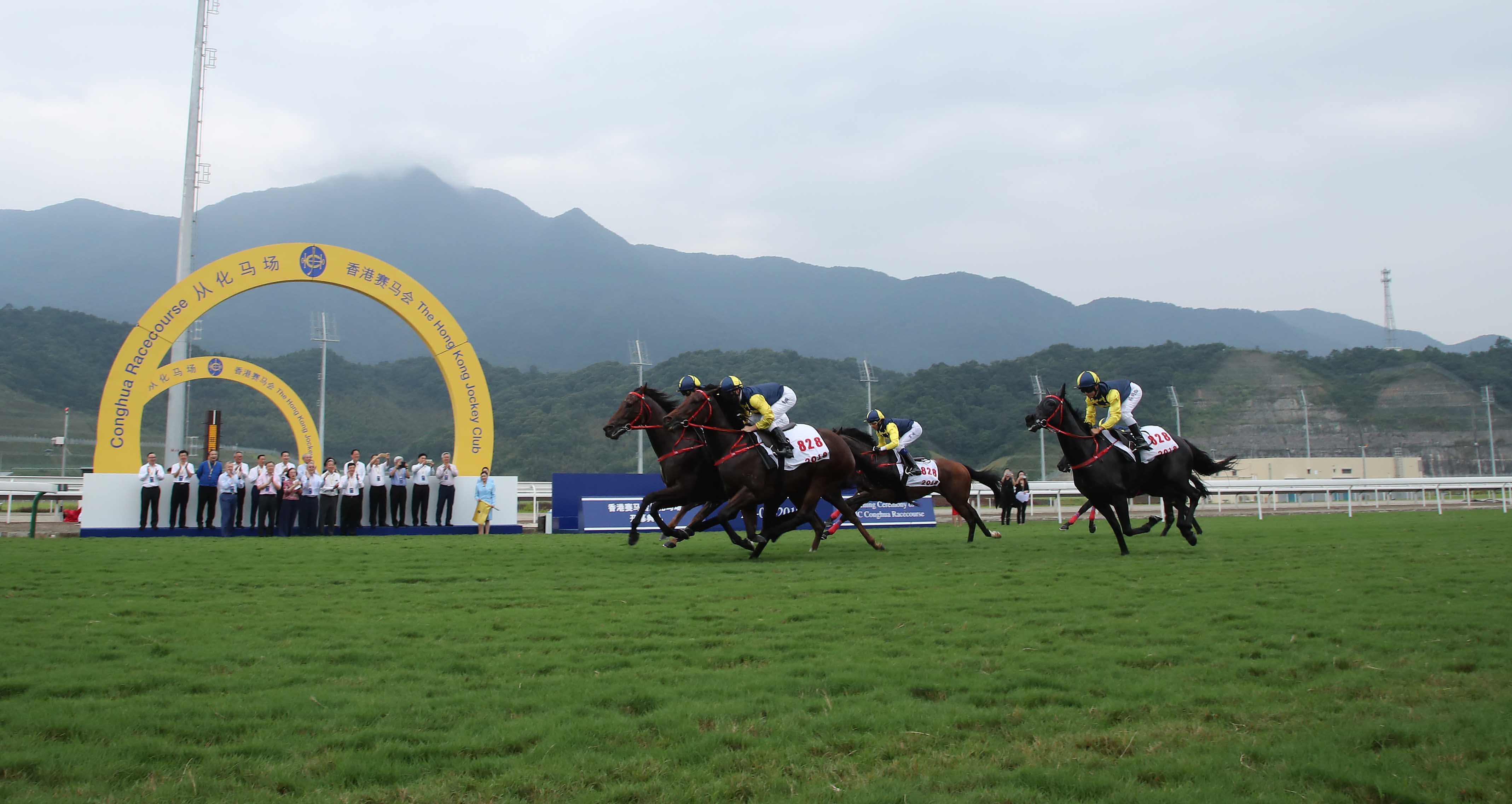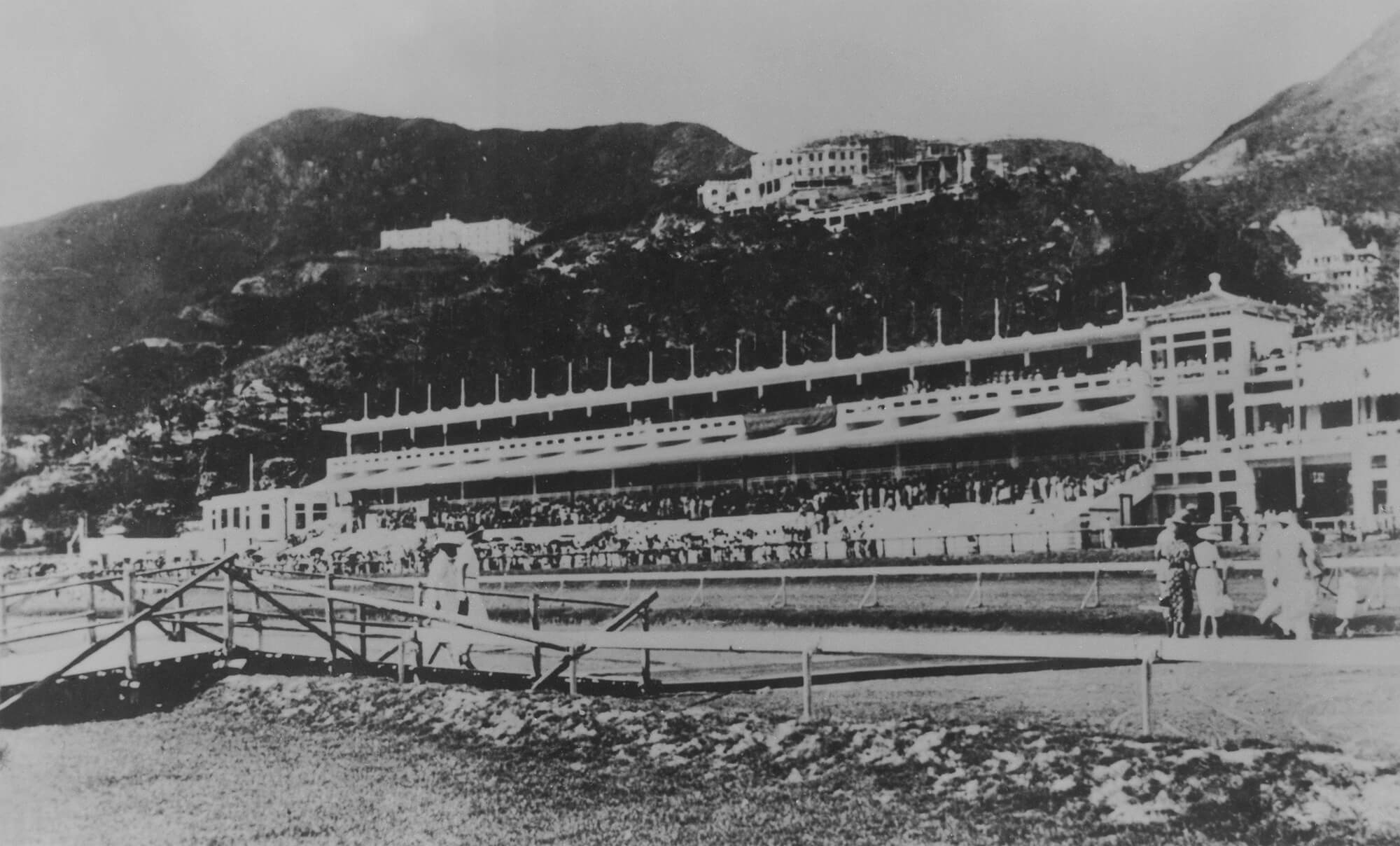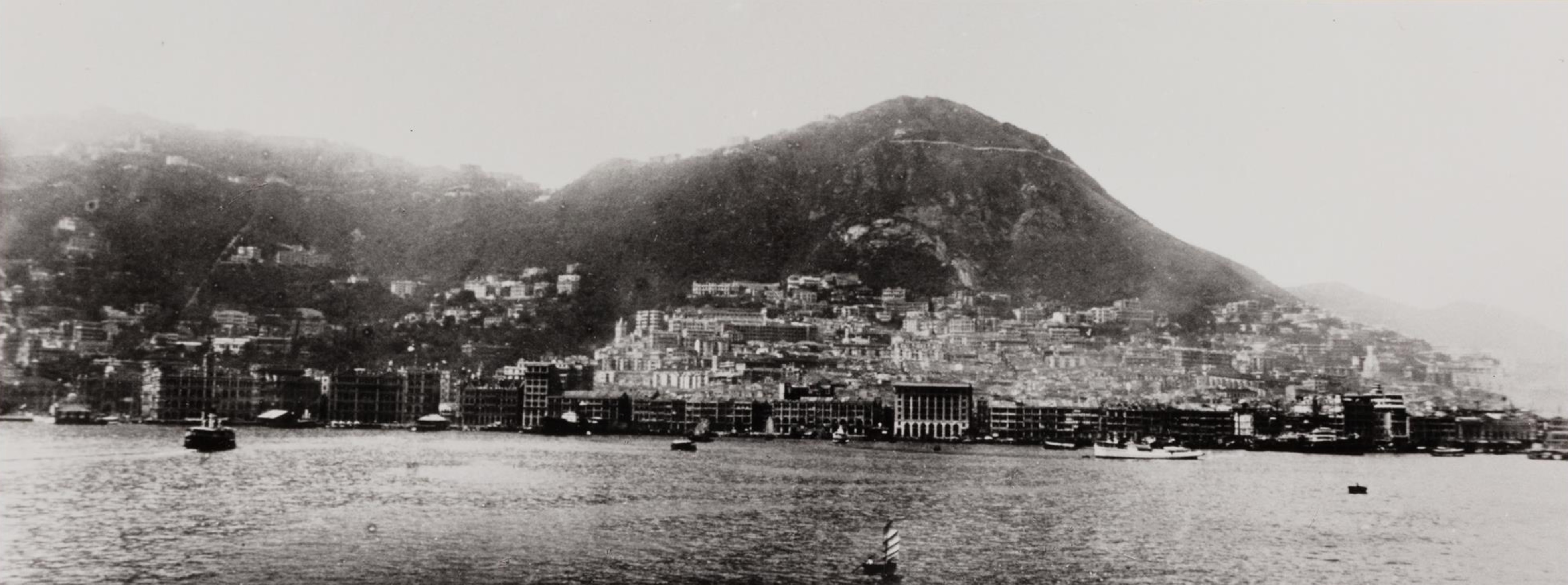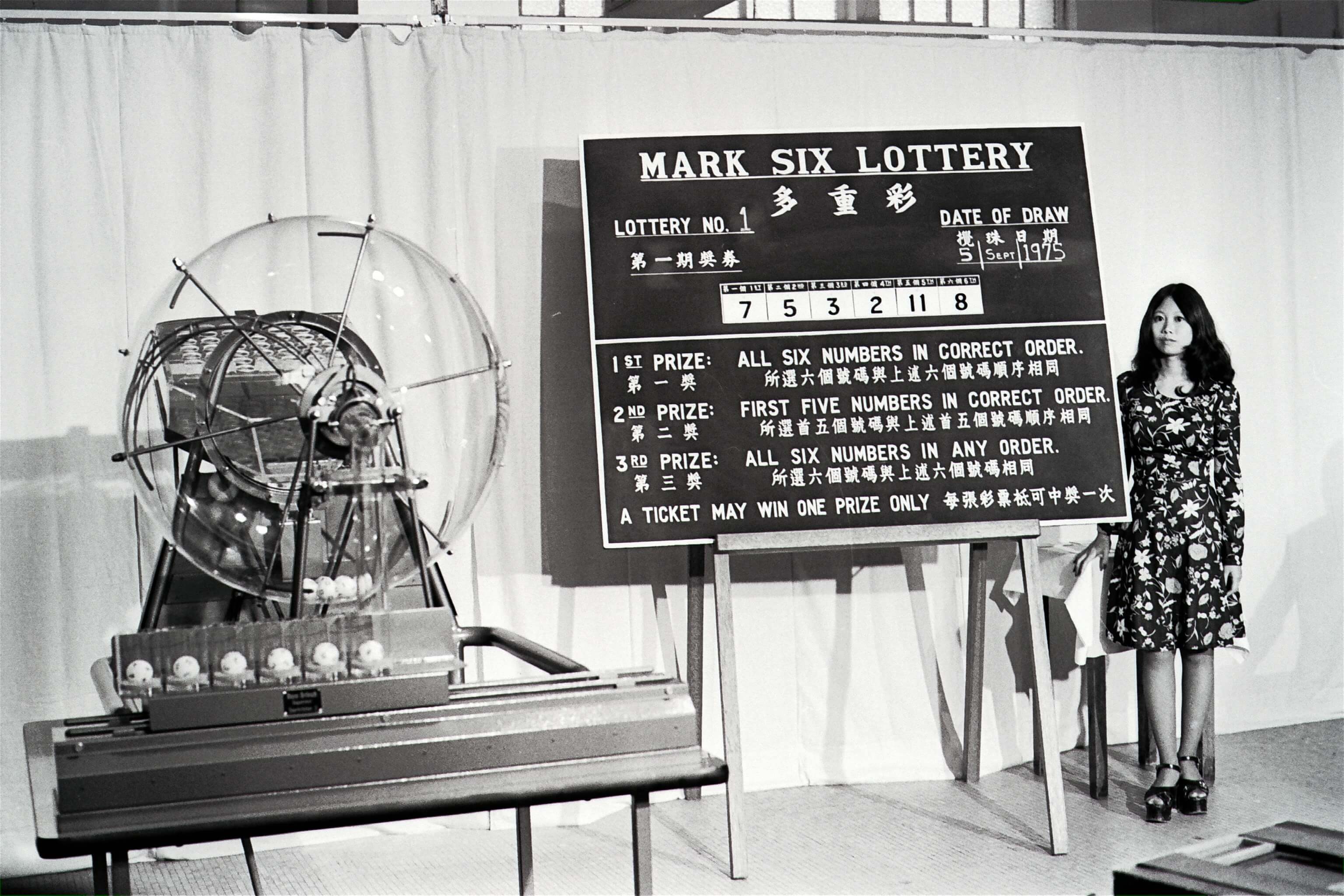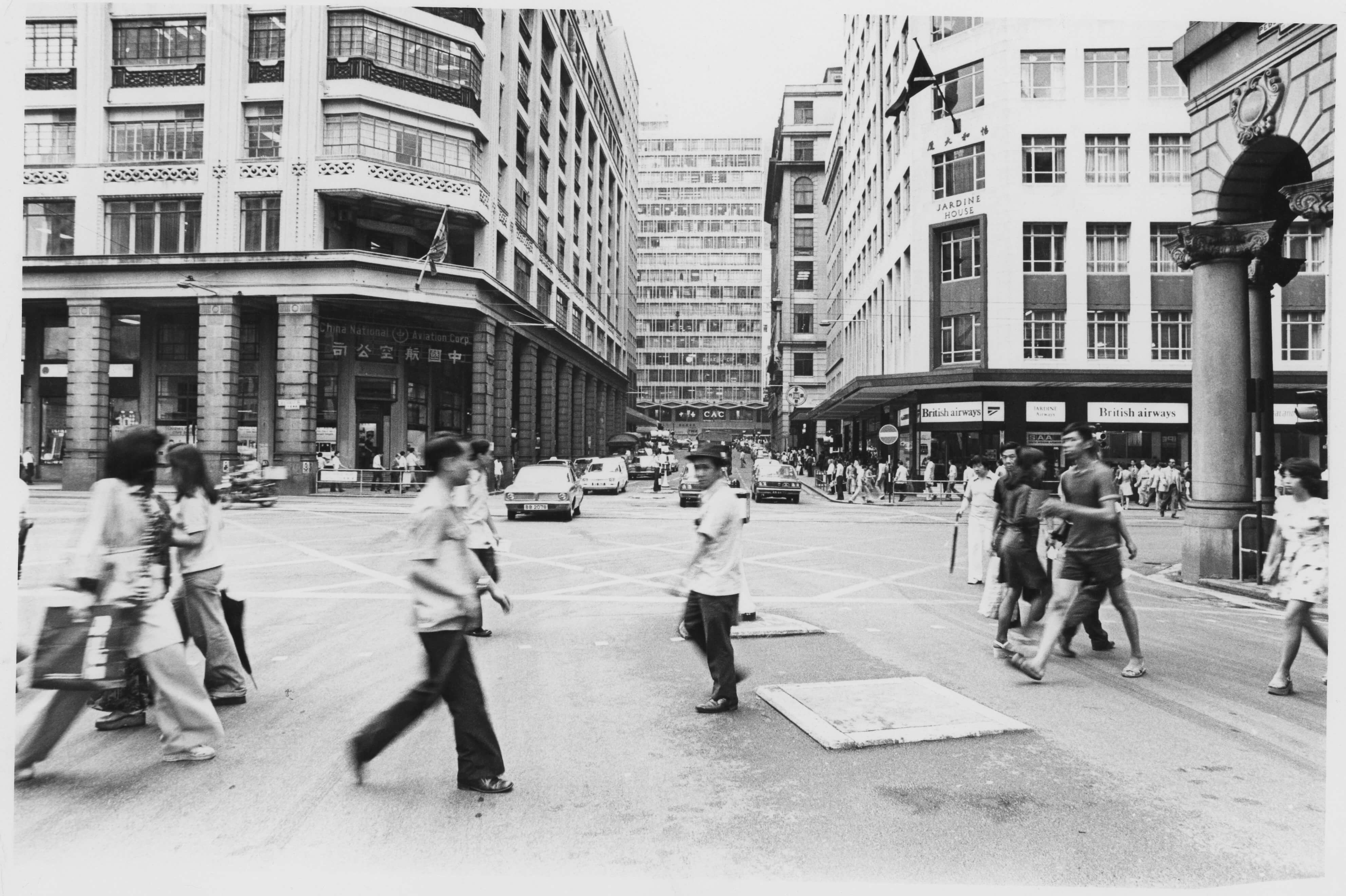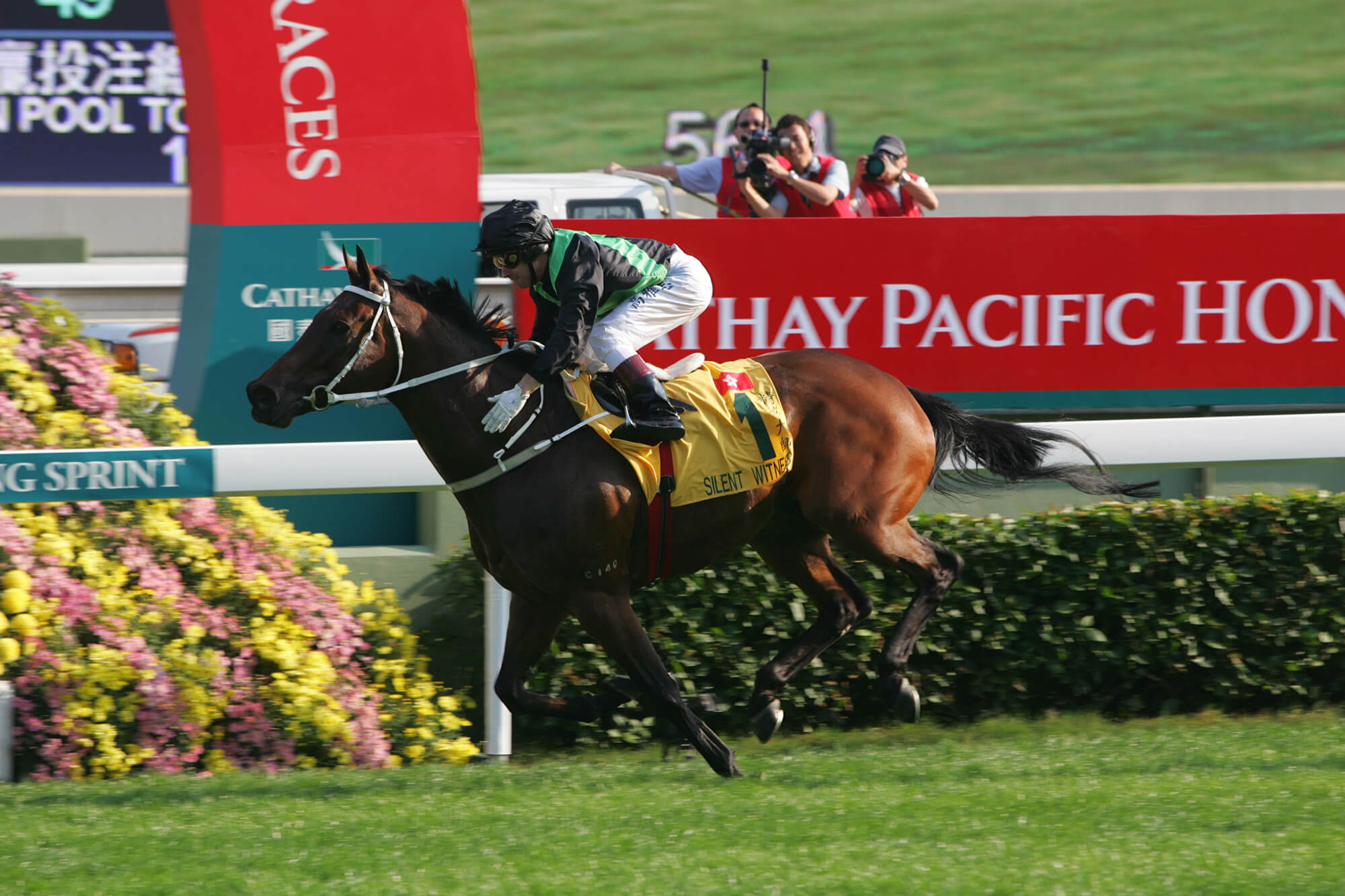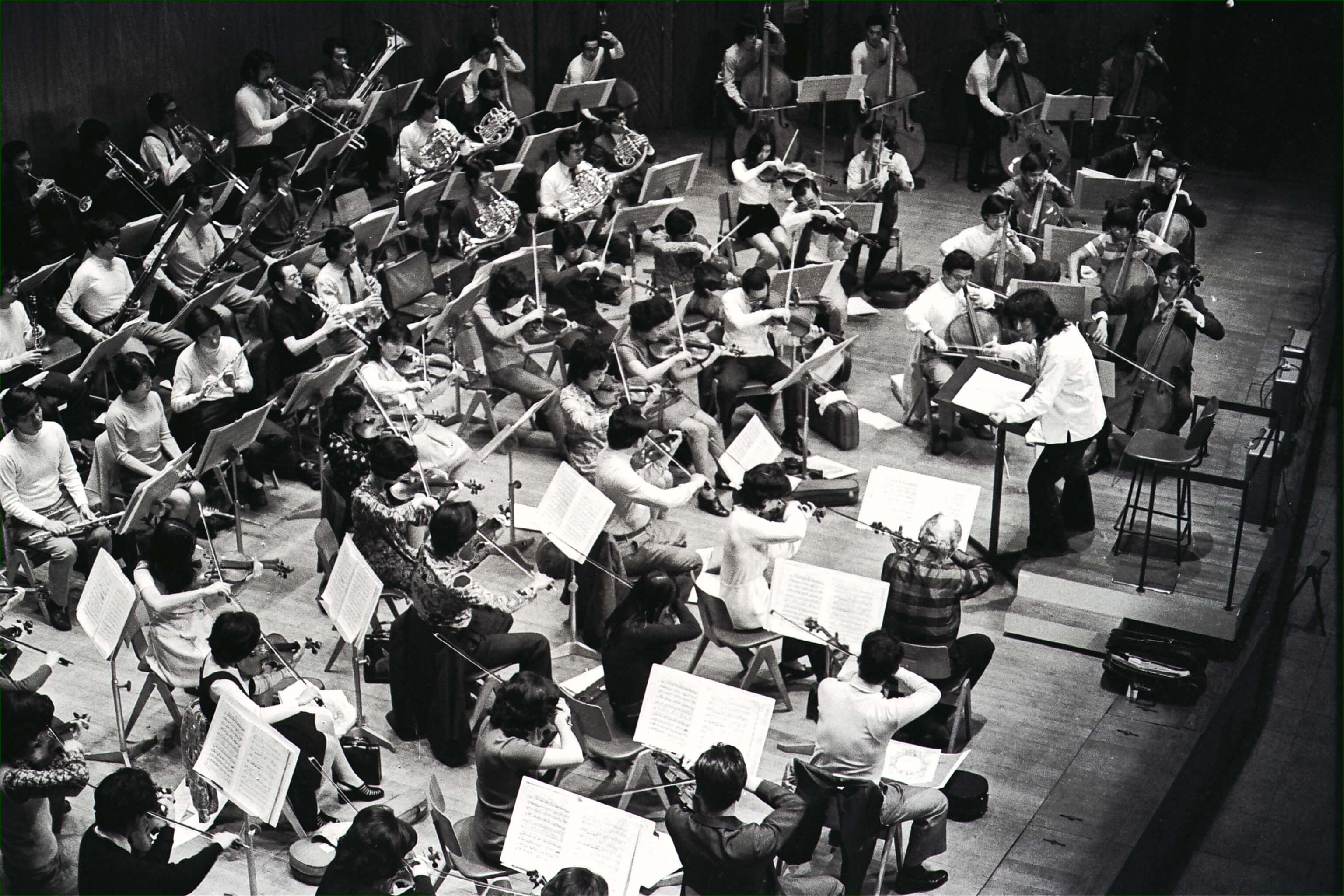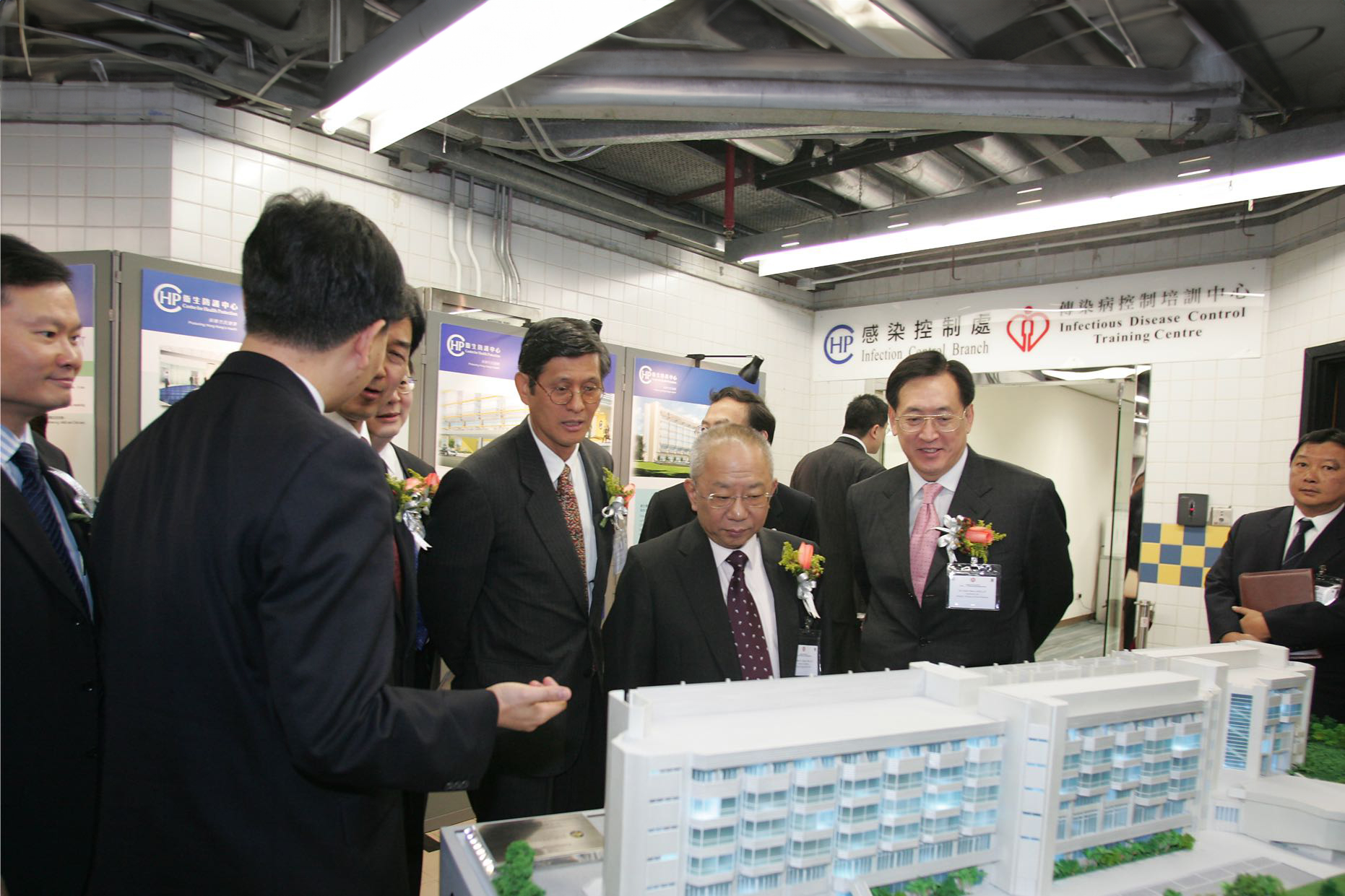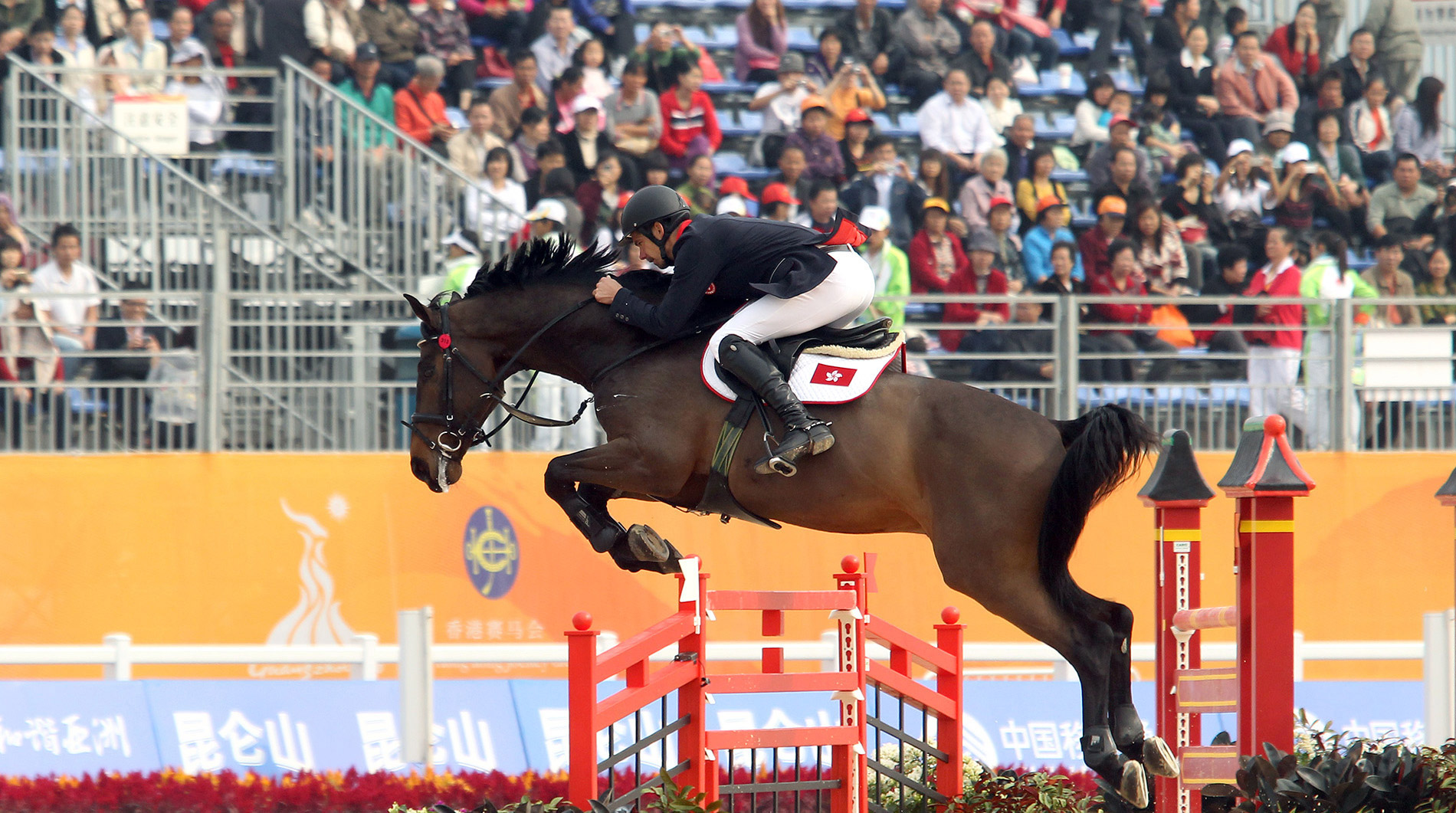1846 - 1884
When horse racing was introduced to Hong Kong in the 1840s, Happy Valley would become the site of the city's first racecourse. The first race meeting was held at Happy Valley in 1846, marking the birth of an equine capital in Asia. In 1873, the now-legendary Hong Kong Derby was run for the first time, signalling the growing popularity of the sport.
The iconic visual of Hong Kong Island today is one of
stunning skyscrapers set against the backdrop of green
mountains, seen across the famed Victoria Harbour. But when
you look at 19th-century photos of the city, you will notice
a lot more undulating hills, lowlands and waterways.
One notable geographic feature was the wong nai chung
, or "yellow mud stream", a river which flowed through an
area of swampy marshland that would eventually be called
Happy Valley.
When horse racing was introduced to Hong Kong in the 1840s,
Happy Valley would become the site of the city's first
racecourse. The location was chosen because it had the only
suitable flat land on Hong Kong Island.
The first race meeting was held at Happy Valley in 1846,
marking the birth of an equine capital in Asia. In 1873, the
now-legendary Hong Kong Derby was run for the first time,
signalling the growing popularity of the sport.
Races would come under the stewardship of The Hong Kong
Jockey Club when it was founded in 1884 as a members club
for horse racing enthusiasts, that would later be
instrumental for the management and promotion of horse
racing in the city.
1915 - 1936
As early as 1915, the Club embraced the benefits of donating to charity and the positive effects of enhancing lives through donations . One of the earliest groups to receive support was the Hongkong Benevolent Society, which assisted individuals in financial distress.
The threads of the Club woven into the tapestry of Hong
Kong's community reach back more than a century ago. As
early as 1915, the Club embraced the benefits of donating to
charity and the positive effects of enhancing lives through donations. One of the earliest groups to receive support was
the Hongkong Benevolent Society which assisted individuals
in financial distress.
While Hong Kong had no direct involvement in World War I, it
remained an important trading port. Its population continued
to expand, reaching 878,947 in 1931, compared to 32,983 in 1851. The city's main
airfield at Kai Tak was also developing into a fully-fledged
airport around this time. In 1936, Hong Kong welcomed its
first commercial passenger flight, and the city started seeing visitors from the skies, as
well as from the harbour.
1950s
During World War II, the city's population shrank to 600,000. But
when peace was restored, many who had left for the Mainland
returned, along with more immigrants, at the rate of almost 100,000
per month. By 1950, an estimated 2.2 million people called Hong Kong
home; by 1971, the population reached 4 million.
During those post-war decades, donations from the Club supported the
construction of public clinics, schools and recreational facilities.
During World War II, the city's population shrank to
600,000. But when peace was restored, many who had left for
the Mainland returned, along with more immigrants, at the
rate of almost 100,000 per month. By 1950, an estimated 2.2
million people called Hong Kong home; by 1971, the
population reached 4 million.
During those post-war decades, donations from the Club
supported the construction of public clinics, schools and
recreational facilities, and Hongkongers experienced a
growth not just in economic strength, but also in a focus on
leisure and lifestyle.
It also funded the reclamation of the Causeway Bay Typhoon
Shelter, paving the way for the government's construction of
Victoria Park, which opened in 1957. Over 19 hectares in
size, it remains Hong Kong Island's largest public park,
offering the community a welcoming green space and a place
to enjoy a host of sports such as football, tennis and
swimming, which have since become some of the favourite
activities of the people in Hong Kong and have contributed
to a healthier lifestyle in the city.
It was around this same time that the Club's dedication to
the community was solidified. In 1955, the Club decided to
begin administering donations from its operating surplus,
which was soon followed in 1959, by the establishment of The
Hong Kong Jockey Club (Charities) Ltd as a company to
oversee these donations. By 1993, the greatly evolving
nature, scale and scope of donations led to the creation of
a new entity to manage these funds, The Hong Kong Jockey
Club Charities Trust.
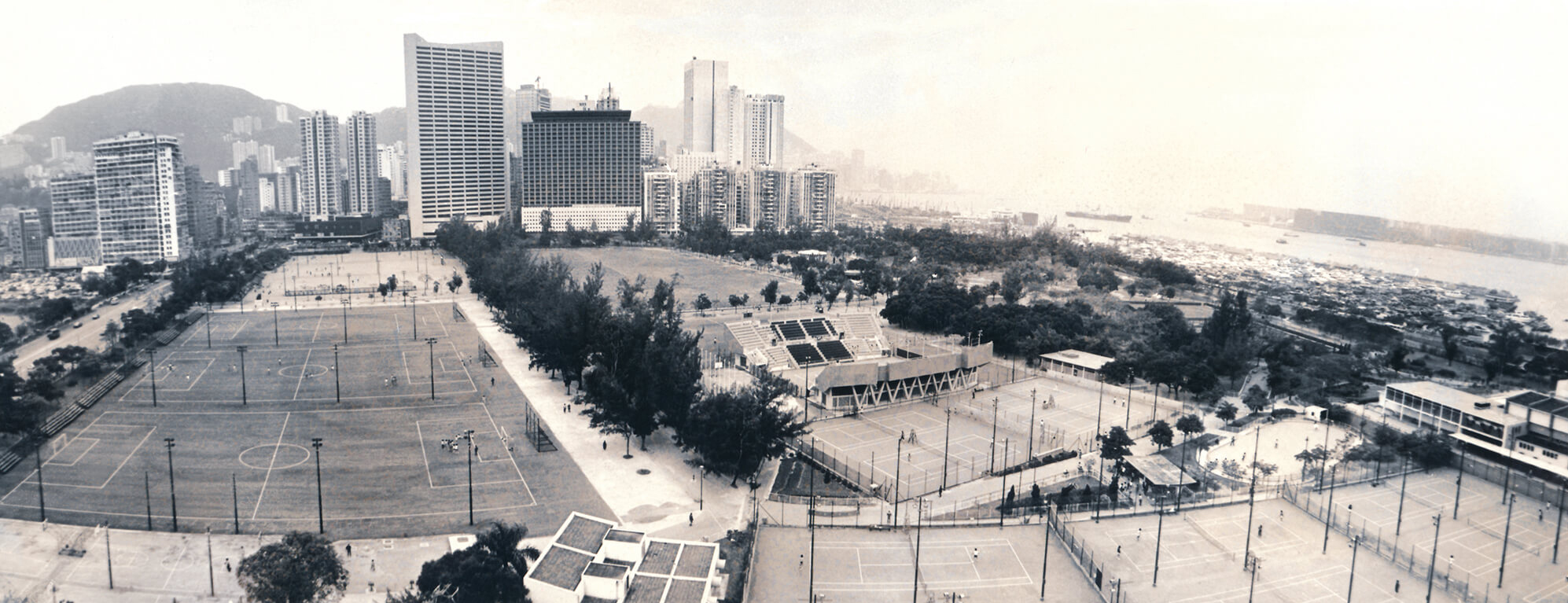
1975
As Hong Kong's population and entertainment offerings grew, the Club began to have a significant role to play when it came to channelling the local wagering demand towards good causes within the city. Besides horse racing, the Club was also authorised by the Hong Kong government to manage other betting activities, to help combat illegal gambling and to ensure that any proceeds benefit the community as a whole.
As Hong Kong's population and entertainment offerings grew,
the Club began to have a significant role to play when it
came to channelling the local
wagering demand towards good causes
within the city.
During the 1960s, the government had run a public lottery.
However, due to the Club's expertise, it was engaged by the
Hong Kong Lotteries Board to manage the running of an
improved lottery, called the Mark Six. The Club has managed
the Mark Six lottery since its initial draw on 5 September
1975. The first lucky winner, who picked five of the six
winning numbers in the correct order, received HK$166,729 in
prize money. To put this into perspective, the average daily
wage of a manufacturing job in those days was HK$102.
While more than half of the money raised from Mark Six
ticket sales goes to the prize fund to reward winning
players, 25 percent is paid to the government as betting
duty and another 15 percent to the government's Lotteries
Fund to support social welfare organisations, thereby
ensuring that each win is not just a win for an individual,
but for society as a whole.
In 1977, the Government of Hong Kong introduced the
"Gambling Ordinance". The law prohibited all betting
activities except those provided by the Club. Under the new
ordinance, these activities only include horse racing and
the Mark Six. The new measure not only helps to resolve
social and security problems induced by illegal betting, but
also ensures proceeds of betting can benefit the
community.
In 2003, with illegal football betting becoming prevalent,
the Government thereby authorised the Club to be the sole
operator for football betting services.
1971
During the late 20th century, Hong Kong's increasing vibrancy was also reflected in the horse racing scene, which filled the grandstands with cheering spectators. In 1971, the Club's members voted to transform the organisation into a professional institution and started to consolidate its international status of horse racing in Hong Kong. Among the initiatives to achieve that aim was the Club's establishment of the Racing Laboratory.
During the late 20th century, Hong Kong experienced a
meteoric rise as an economic powerhouse. The economy
gathered pace in the 1970s, with annual economic growth
averaging 8.9 percent, thanks to a robust manufacturing
sector.
The city's increasing vibrancy was also reflected in the
horse racing scene, which filled the grandstands with
cheering spectators. In 1971, the Club's members voted to
transform the organisation into a professional institution
and started to consolidate the international status of horse
racing in Hong Kong. Among the initiatives to achieve that
aim was the Club's establishment of the Racing Laboratory,
which through stringent controls and drug testing helps to
assure racing fans of the fairness and integrity of every
race.
Internationally recognised for the quality of its work, the
facility is one of only five accredited laboratories
appointed to serve the Fédération Equestre Internationale,
and is also among the six reference laboratories accredited
by the International Federation of Horseracing Authorities.
Only four such laboratories worldwide have attained both
accreditations, which further highlights the Club's
excellence in the global horse racing industry.
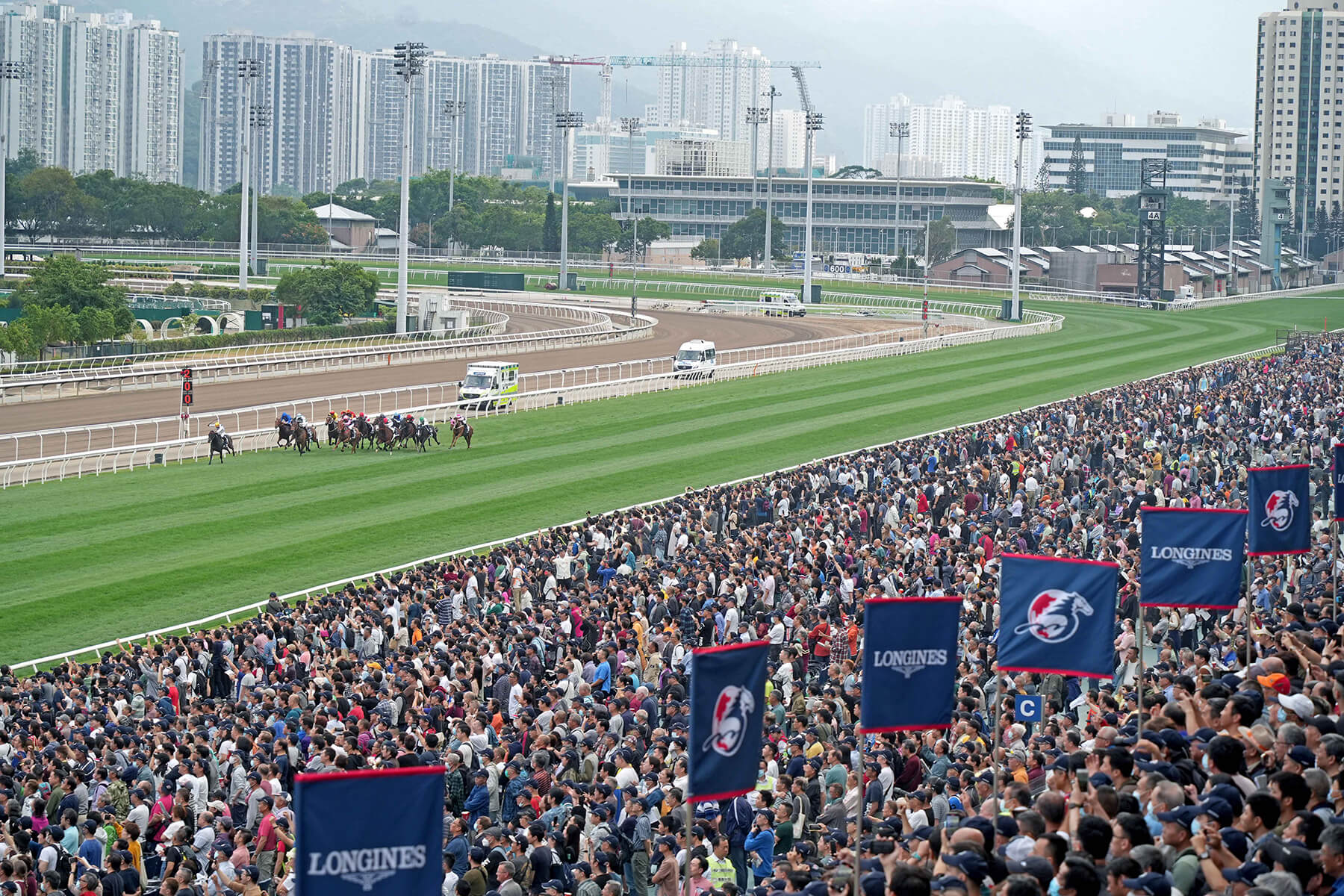
1978 - 1999
Sha Tin Racecourse, which opened in 1978, is home to the LONGINES Hong Kong Cup, part of the Hong Kong International Races (HKIR) held annually in December. The LONGINES Hong Kong Cup was originally known as the Hong Kong Invitation Cup when it was first inaugurated in 1988 and had a purse of HK$1.47 million. In December 1993, when the race attained international Group 3 status, it was opened to the public and was renamed the Hong Kong International Cup. It was in 1999 when it earned its current title (Hong Kong Cup), in recognition of it becoming Hong Kong's first international Group 1 race and (to this day) the city's richest race.
Sha Tin Racecourse, which opened in 1978, is home to the
Longines Hong Kong Cup, part of the Hong Kong International
Races (HKIR) held annually in December.
The LONGINES Hong Kong Cup was known as the Hong Kong
Invitation Cup when it was first inaugurated in 1988 as a
1800m heat open to riders from Singapore and Malaysia and
had a purse of HK$1.47 million. It was renamed in 1999 when
it also became Hong Kong's first international Group 1 race
and is still the city's richest race, with its most recent
2023 total purse standing at HK$36 million, while the
overall HKIR purse in 2023 was a gigantic HK$118 million.
The LONGINES Hong Kong Cup is among a dozen Group 1 races
staged by the Club that attract the most celebrated horses
and jockeys from around the world. In addition to the Hong
Kong Cup, Mile, Sprint and Vase in December, there is also
the Stewards' Cup and Centenary Sprint Cup in January, the
Citi Hong Kong Gold Cup and Queen's Silver Jubilee Cup in
February, the FWD QEII Cup, FWD Champions Mile, Champions
Mile and Chairman's Sprint Prize in April, as well as the
Standard Chartered Champions & Chater Cup in May.
Today, the LONGINES HKIR is the most hotly anticipated day
of the racing calendar. Tens of thousands of racing fans
descend upon Hong Kong for the occasion, most also attending
the LONGINES International Jockeys' Championship in the same
week, as the highlight of the season brings together the
world's greatest horses and jockeys in our small but
thriving city.
Early 2000s
Horse racing's popularity as a sport went from strength to strength, as equine superstars like Silent Witness found international stardom and became household names, and Happy Wednesdays transformed races into crowd-pleasing social events.
Many equine athletes have found international stardom in
Hong Kong as well. Among the most famous was an unheralded
Australian bay racehorse called
Silent Witness, who made his
debut as a three-year-old at the Sha Tin Racecourse in a
1,000-metre race winning by a margin of almost four lengths
in 2002. He clearly acquired a taste for the winning arch
as, not satisfied with just one win, he went on to secure 17
consecutive wins and became the world's top sprinter in 2004
and 2005. His fame was such that he was named one of the
"100 Most Influential People" in the December 2004 issue of
TIME magazine, an honour rare
enough for the most talented human beings, and much more so
among the four-legged population.
Hong Kong's racehorses are admired not only for their
winning records but also for their athleticism.
Golden Sixty, a three-time Hong
Kong Horse of the Year, is a shining example. The superstar
galloper rewrote history as the only 10-time Group 1 winner
and the highest earner in Hong Kong racing history.
Meanwhile, even those new to the sport of racing are
flocking to the racecourses. Since the early 2010s, mid-week
evening races in Happy Valley, Happy Wednesdays have become
a crowd-pleasing social event and magnet for locals and
visitors alike. Showcasing Hong Kong's cosmopolitan appeal,
the outdoor Beer Garden features delectable food, chilled
drinks, live music with international acts, and an
exhilarating trackside view of the races.
1973
Over the years, as Hong Kong grew in affluence, its population sought more sophisticated entertainment and cultural experiences. On this front, the Club has continuously supported the city's development along the way. In 1973, the Hong Kong Arts Festival debuted and the Club was among the first partners to support it.
Over the years, as Hong Kong grew in affluence, its
population sought more sophisticated entertainment and
cultural experiences. On this front, the Club has
continuously supported the city's development along the way.
In 1973, the Hong Kong Arts Festival debuted and the Club
was among the first partners to support it.
The launch was marked by a diverse programme featuring
international artists and troupes, including the Royal
Danish Ballet presenting the work of 19th-century ballet
master and choreographer August Bournonville, Bristol Old
Vic Theatre's production of a romp based on Shakespeare’s comedy The Taming of the Shrew, and American folk-singer and
songwriter Tom Paxton.
Since then, the festival has remained committed to enriching
the cultural life of the city by hosting leading local and
international artists in all genres of the performing arts.
1977 - 1991
In 1977, Ocean Park opened thanks in no small part to funding from the Club. The Club operated the park until 1987. To further balance urban living with easy access to green spaces, the Club funded the redevelopment of Kowloon Park in Tsim Sha Tsui, which reopened in 1989, as well as the opening of Hong Kong Park in Central in 1991.
In 1977, Ocean Park – the city's first world-class theme
park, known for its iconic cable cars and gigantic aquarium
– opened thanks in no small part to funding from the
Club.
The Club operated the park until 1987 when it became an
independent statutory body funded by an endowment to ensure
its long-term financial stability. By then, the park was
home to a wide variety of attractions, thrill rides such as
the Dragon and the Raging River, as well as a 225-metre-long
outdoor escalator - a world record at the time.
In 1998, the Club funded the construction of the HKJC Giant
Panda Habitat, specially designed to accommodate two of the
city's most famous residents; the giant pandas, An An and
Jia Jia from Sichuan province.
To further balance urban living with easy access to green
spaces across the city, the Club funded the redevelopment of
the 13.3-hectare Kowloon Park in Tsim Sha Tsui, which
reopened in 1989, as well as the opening of the 8.16-hectare
Hong Kong Park in Central in 1991.
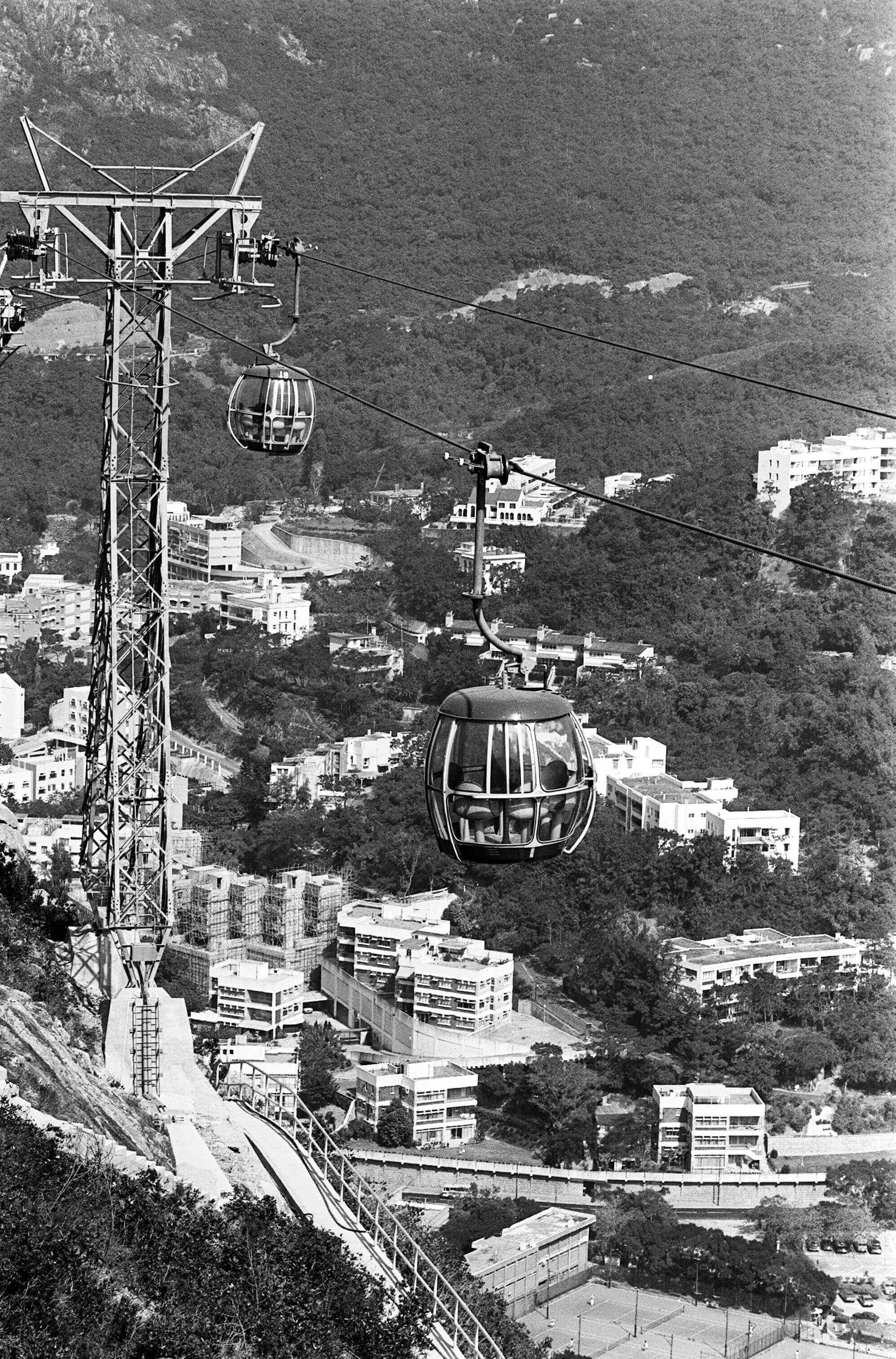
Photo: South China Morning Post Publishers Limited 相片由南華早報提供
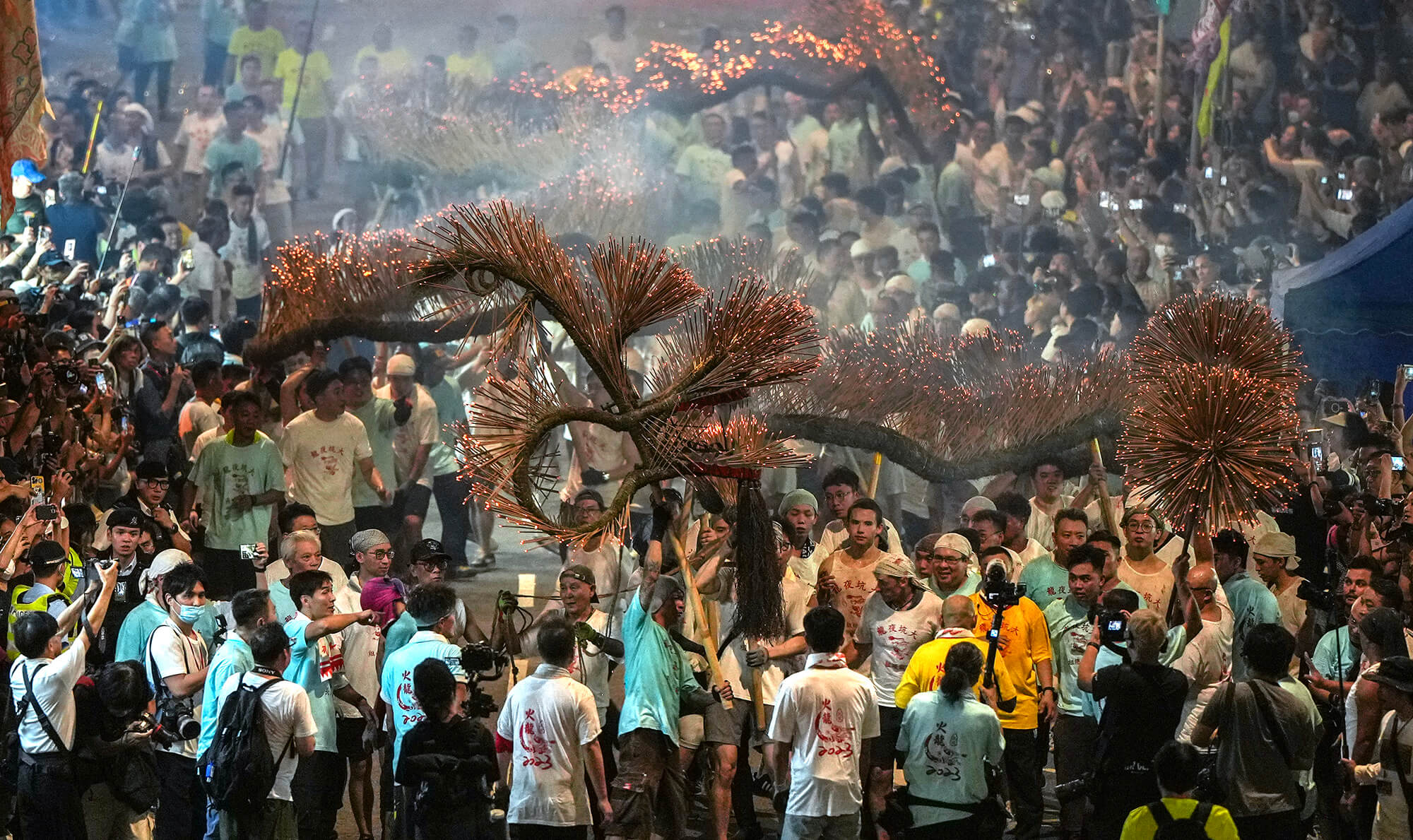
Photo: South China Morning Post Publishers Limited 相片由南華早報提供
2012
For more than a decade, the Club’s Charities Trust has supported three traditional events in Hong Kong that have been inscribed on China’s third National List of Intangible Cultural Heritage: the Tai Hang Fire Dragon Dance, the Cheung Chau Bun Festival and the Tai O Dragon Boat Water Parade.
Like other world cities, Hong Kong is constantly changing, but it is also steeped in tradition. Amid new developments, the Club is equally keen on keeping the city’s old traditions alive.
For more than a decade, The Club’s Charities Trust has supported three traditional events in Hong Kong that have been inscribed on China’s third National List of Intangible Cultural Heritage: the Tai Hang Fire Dragon Dance, the Cheung Chau Bun Festival and the Tai O Dragon Boat Water Parade.
At the Cheung Chau Bun Festival, competitors hastily scale a 14-metre-high bamboo tower and attempt to grab as many of the 9,000 buns arranged upon it.
During the Mid-Autumn Festival, an entrancing procession is held in the historic neighbourhood of Tai Hang. Each year, a 67-metre-long dragon decorated with over 70,000 incense sticks makes its way down Fire Dragon Path. And each year since 2010, the Charities Trust acts as a donor to make sure the dragon never misses their appointment.
On the outlying island of Tai O, the local residents perform a unique ritual during the period of the Dragon Boat Festival races, the Tai O Water Parade. The island’s three fishermen associations (Pa Teng Hong, Sin Yu Hong and Hap Sim Tong) engage in a procession where they row their boats to four different temples, bringing statues of deities along with them. It’s a unique event found nowhere else that the Charities Trust has been proud to support since 2010.
2018
Tai Kwun, Hong Kong’s vibrant cultural heart, has had its revitalisation and ongoing operation supported by the Club. In 2019, a year after it opened, Tai Kwun received the highest Award of Excellence in the UNESCO Asia-Pacific Awards for Cultural Heritage Conservation, making Tai Kwun a role model in conservation on the international level.
In the centre of the bustling entertainment district of Central SoHo is Tai Kwun. The Club has led the revitalisation project and continues to fund and support Tai Kwun’s daily operations. The former historic Central Police Station compound was converted into Hong Kong’s vibrant cultural heart, committed to inspiring the community by providing the people of Hong Kong with access to a variety of immersive, world-class experiences. It is open for all members of the community to enjoy, nurturing an appreciation for arts, heritage and culture. It also provides an array of retail options and a stylish line-up of bars and restaurants, among other lifestyle offerings.
In 2019, a year after it opened, Tai Kwun received the highest Award of Excellence in the UNESCO Asia-Pacific Awards for Cultural Heritage Conservation, making Tai Kwun a role model in conservation on the international level.
Tai Kwun further illustrates the increased appreciation for arts, heritage and culture in Hong Kong, recognising, nurturing and celebrating local talent.
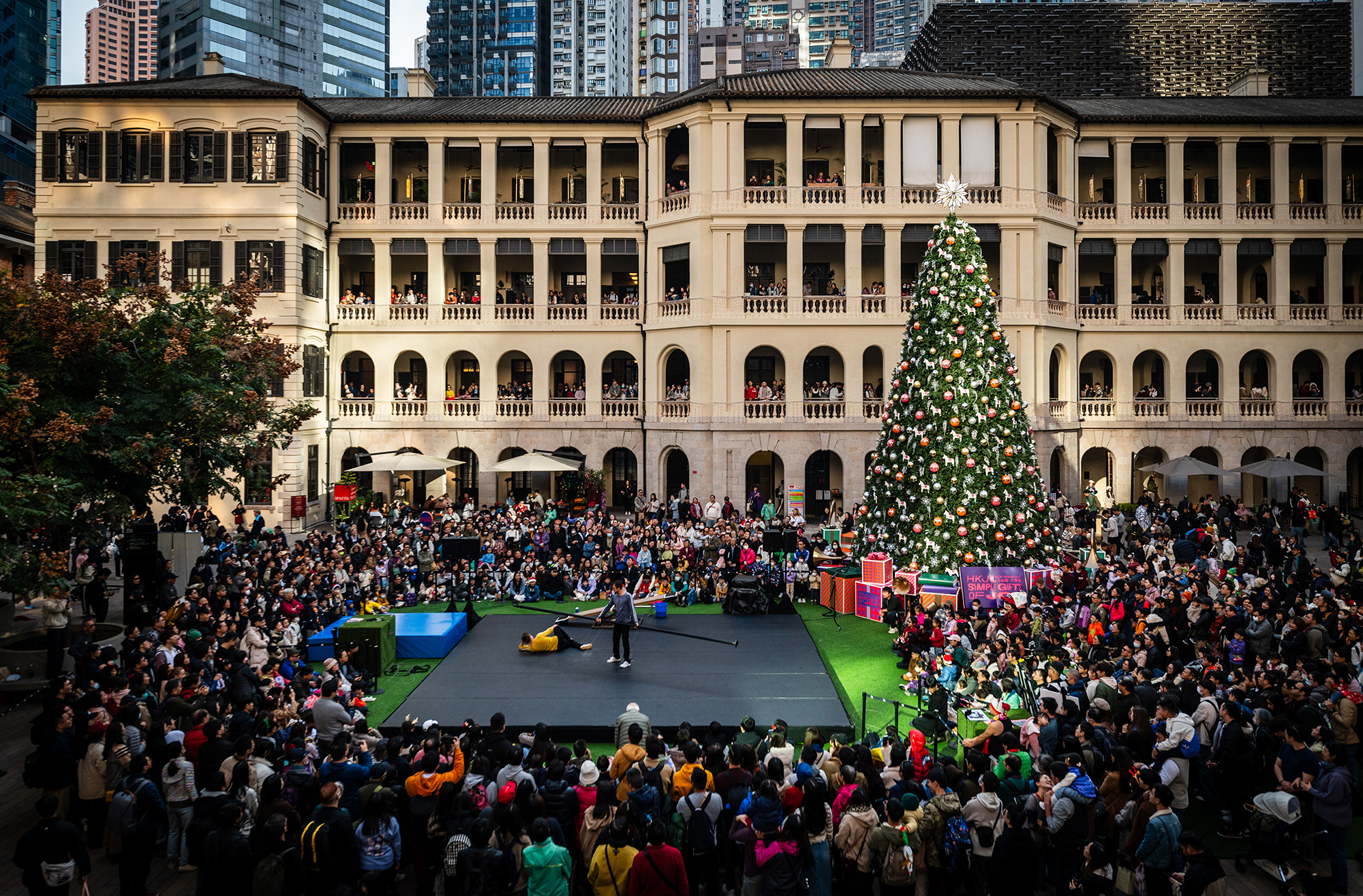
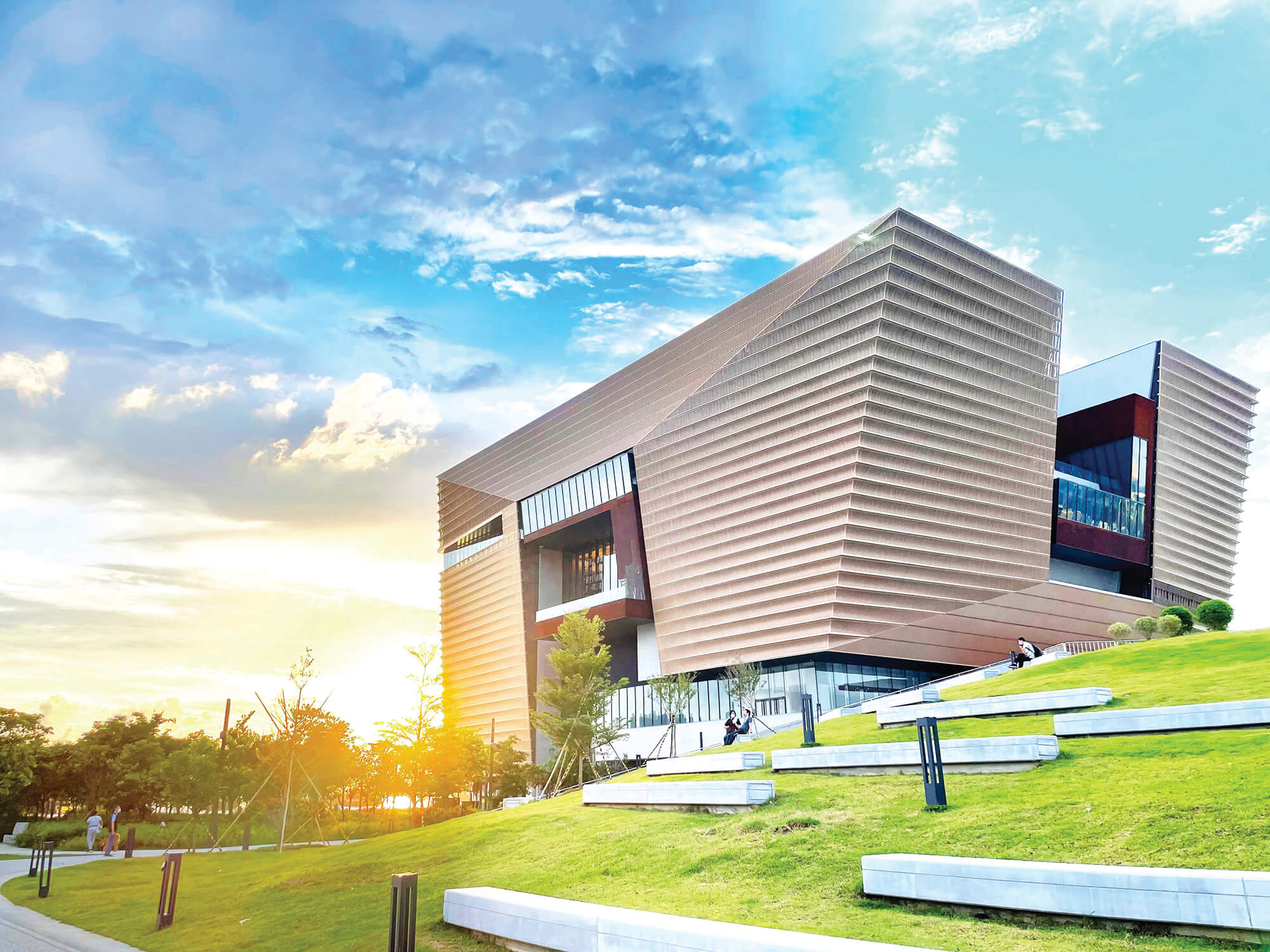
2022
In 2022, the Hong Kong Palace Museum opened its doors to provide a sanctuary for learning about and appreciating Chinese art. Its construction was funded by an unprecedented single donation of HK$3.5 billion from the Club.
In 2022, the Hong Kong Palace Museum opened its doors to
provide a sanctuary for learning about and appreciating
Chinese art. Its construction was funded by an unprecedented
single donation of HK$3.5 billion from the Club.
It is located in the West Kowloon Cultural District, a major
development in Hong Kong that began opening in phases in
2018. It features several public spaces and arts venues
established across 40 hectares of reclaimed land to serve as
a new cultural and lifestyle hub.
The museum's opening also marked the 25th anniversary of the
establishment of the Hong Kong Special Administrative
Region.
1971 - 1991
Hong Kong's economic and cultural growth would not have been possible without the collective efforts to improve its education system. The Club played a notable part in the city's educational growth.
Hong Kong's economic and cultural growth would not have been
possible without the collective efforts to improve its
education system. As a result of decades of reform, young people now enjoy free education through to the end of
secondary school.
In 1971, the government introduced free six-year primary
education. The policy was extended to the third year of
secondary schooling in 1978 and finally to 12 years in 2008.
Being able to complete primary and secondary education
affordably allowed more young people in the city the chance
to advance to tertiary education.
Meanwhile, the University of Hong Kong - which originally
opened in 1912 - had built an international reputation as a
centre of academic excellence. In 1963, The Chinese
University of Hong Kong (CUHK) opened as a forward-looking
comprehensive research university with a global vision and a
mission to combine tradition with modernity and to bring
China together with the West.
During the 1990s, six educational institutions were formally
registered as universities, putting the city's total to
eight by the start of the millennium. They include the Hong
Kong University of Science and Technology (HKUST), which was
funded and constructed by the Club, opening in 1991.
Over the years, this tertiary institution has achieved high
placements in global ranking schemes, which includes its
Kellogg-HKUST Executive MBA Program being ranked number one
in the world on 12 occasions by the Financial Times.
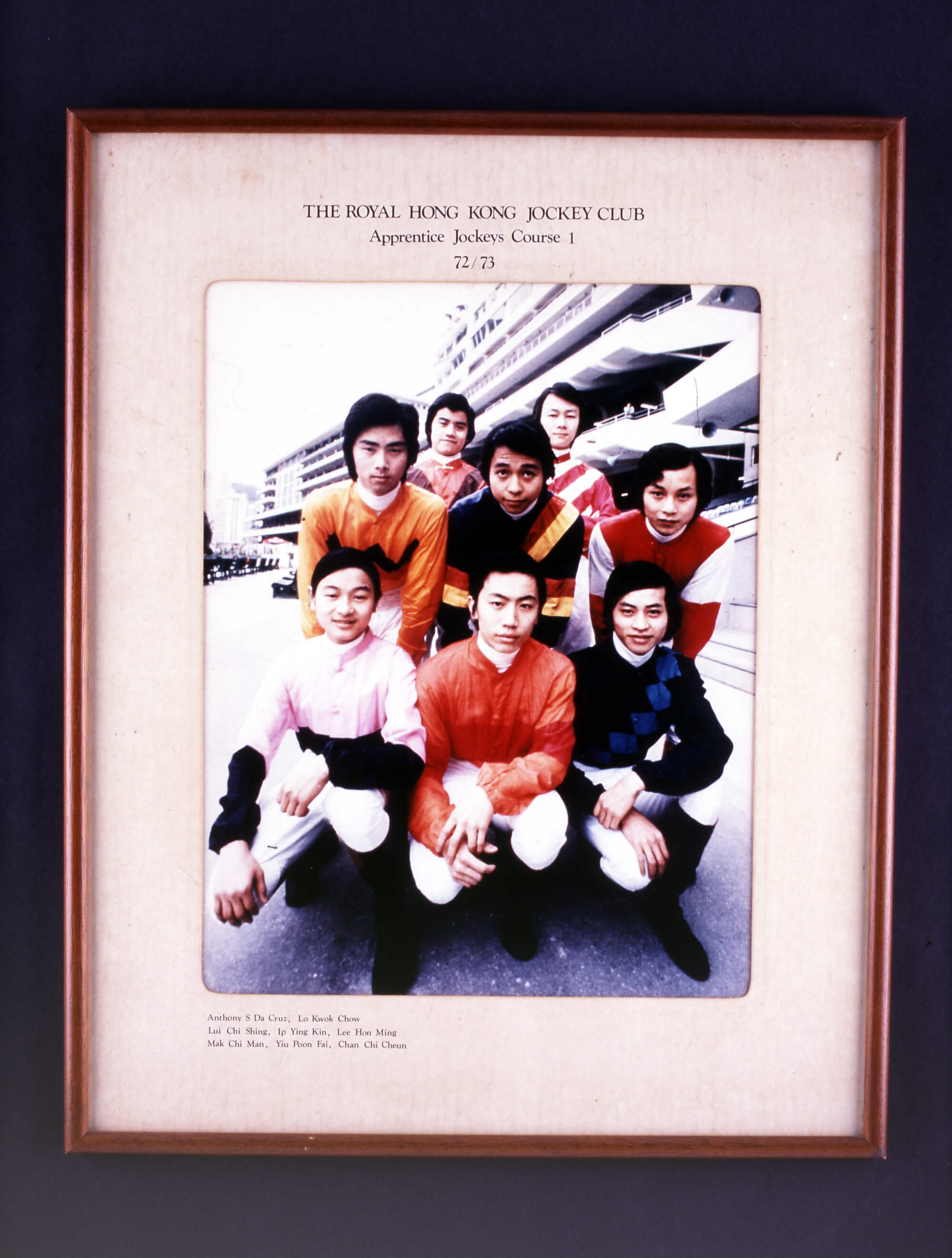
1972
The Club has helped Hong Kong distinguish itself as a hub for training racing talent and equine care professionals with the Apprentice Jockeys' School, founded in 1972. Well-known graduates from this school include legendary jockey-turned-trainer Tony Cruz, champion trainer Ricky Yiu and outstanding jockey Vincent Ho. In 2023, Ho became the first homegrown jockey to win the International Jockeys’ Championship.
The Club has helped Hong Kong distinguish itself as a hub
for training racing talent and equine care professionals
with the Apprentice Jockeys' School, founded in 1972.
Well-known graduates from this school include legendary
jockey-turned-trainer Tony Cruz, champion trainer Ricky Yiu
and outstanding jockey Vincent Ho.
Cruz and Yiu were among the first future world-class riders to enrol at the school when it opened in 1972.
Cruz started his riding career in the 1973/74 season and
went on to become a six-time Hong Kong Champion Jockey. He
further ensured his place in Hong Kong racing history by
posting 946 wins as a jockey before taking out a trainer's
licence in 1996. He would subsequently be twice named
champion trainer, and even to this day, his name regularly
appears in racing articles due to his continued success, and
he can be said to be a household name even for those new to
the world of racing. A local hero, he is even the namesake
of the annual Tony Cruz Award, presented to the homegrown
rider with the most wins during a season.
After a brief riding career, Yiu obtained his trainers'
licence in 1995/96 and was crowned champion trainer in
2019/20.
Cruz and Yiu have reached over 1,500 and 1,000 wins as
trainers in Hong Kong respectively.
Ho reached the graduation benchmark on 1 October 2012 by
claiming his 70th win in Hong Kong. By the 2022/23 season,
he became the second homegrown jockey in history to win 500
races and took a fourth Tony Cruz Award. In 2023, Ho became the first homegrown jockey to win the International Jockeys’ Championship.
1985
Hong Kong has produced many stars through the Hong Kong Academy for Performing Arts (HKAPA), which opened in 1985 with the support of a donation from the Club. Several of its graduates have gone on to achieve success, both locally and internationally.
Hong Kong has produced many stars through the Hong Kong
Academy for Performing Arts (HKAPA), which opened in 1985
with the support of a donation from the Club. Several of its
graduates have gone on to achieve success, both locally and
internationally.
Some of these accomplished alumni include resident conductor
of the Hong Kong Philharmonic Orchestra Lio Kuokman and
multiple prize-winning classical pianist Rachel Cheung.
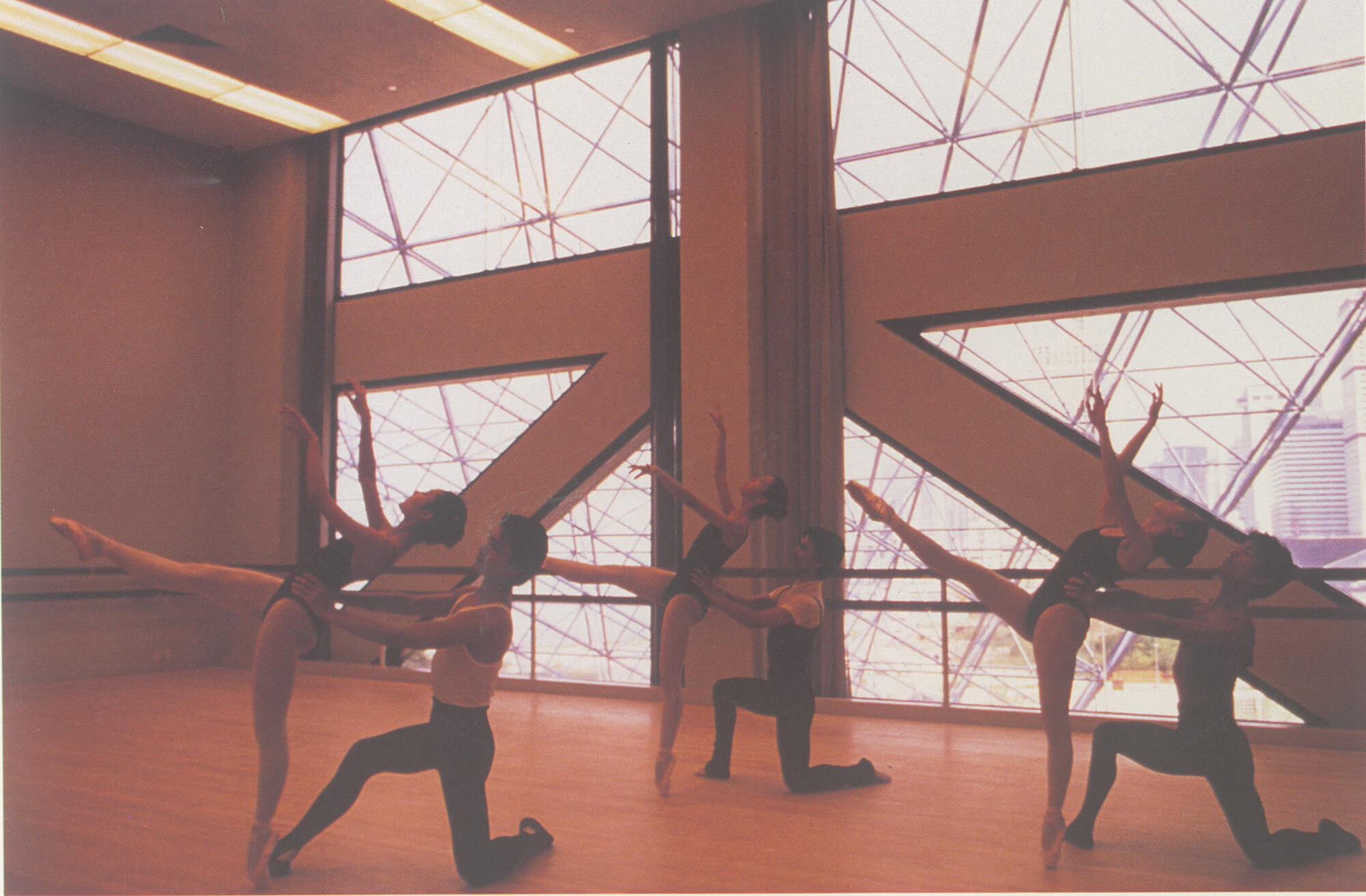
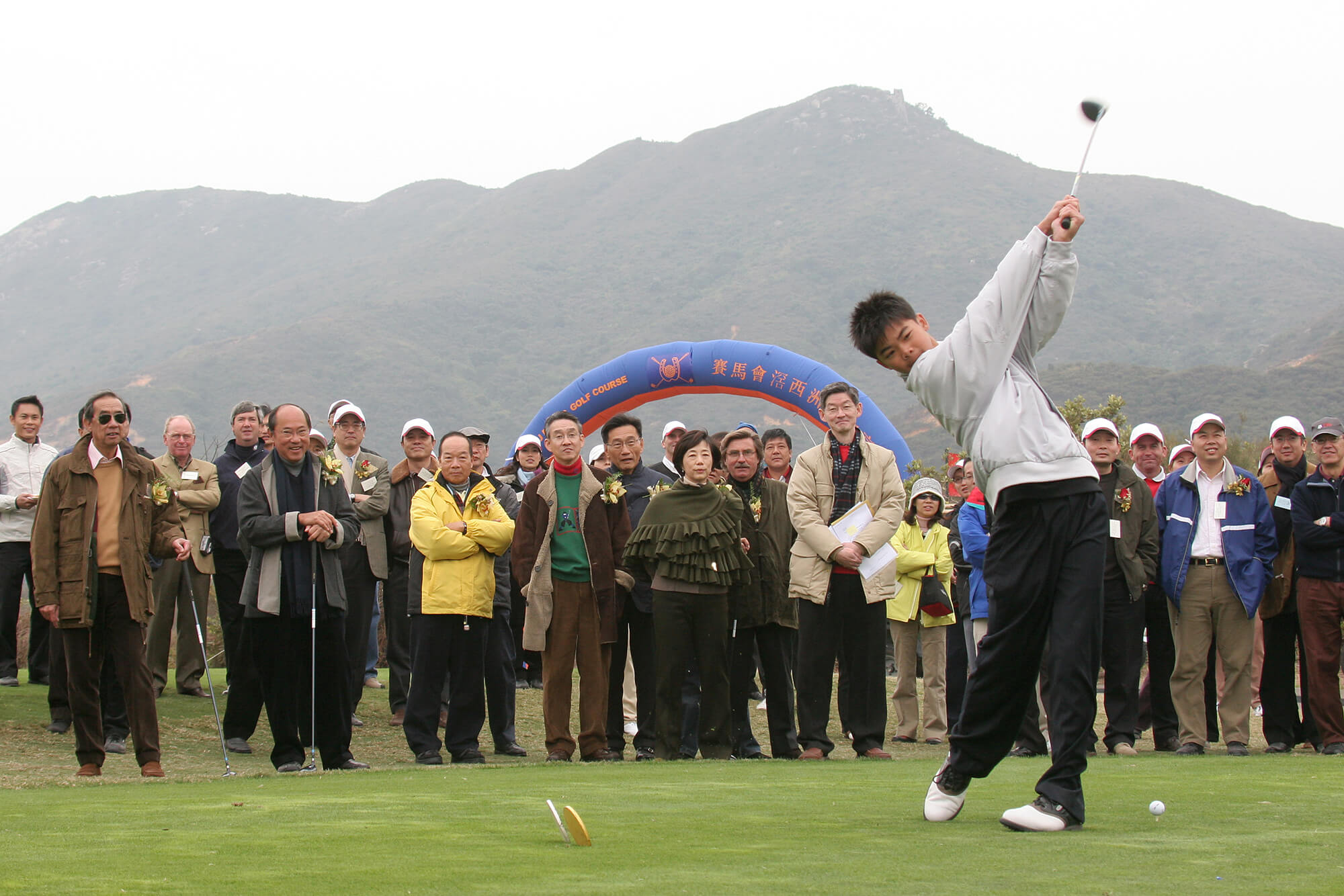
1978 - 1995
Beyond academic pursuits, physical activities are another important part of young people’s holistic development. To promote horse riding in the city, the Club opened its first public riding school in 1978. The Club also donated to redevelop Hong Kong Stadium, which reopened in 1994, while the Jockey Club Kau Sai Chau Public Golf Course opened in 1995.
Beyond academic pursuits, physical activities are another important part of young people’s holistic development, which can be addressed through a range of sports on offer in Hong Kong.
Riding is not limited to professional jockeys on the racetrack or eventing competitors. To promote horse riding in the city, the Club opened its first public riding school in 1978, and now has a total of three venues, namely Tuen Mun Public Riding School, Pokfulam Public Riding School, and Lei Yue Mun Public Riding School.
The Club’s efforts to promote sports expanded into other areas, including donating to redevelop Hong Kong Stadium. The venue reopened in 1994 as a world-class facility that served as home to the annual Hong Kong Sevens international rugby event for decades.
In 1995, the Jockey Club Kau Sai Chau Public Golf Course opened to provide the public with a place to practise the sport and also enjoy a host of recreational amenities in a scenic coastal setting. The golf course is the first in China to be designated as a Certified Audubon Cooperative Sanctuary for Wildlife, and the first course in the Asia-Pacific region to be certified by the Golf Environment Organisation.
1998
In 1998, the Hong Kong Jockey Club Scholarships were established to nurture talent in Hong Kong. Over the decades, more than 1,050 young people have been awarded scholarships to pursue their studies.
In 1998, the Hong Kong Jockey Club Scholarships were established to nurture talent in Hong Kong. For over two decades, more than 1,050 young people have been awarded scholarships to pursue their studies.
As the pathways to success broaden and expand, so, too, has the Club extended its scholarship programmes. Its initial focus was undergraduate studies, which was then extended to include the Vocational Education Scholarship and the Graduate Scholarship for studies abroad. The Graduate Scholarship supports students to pursue postgraduate studies at top-notch universities worldwide.
By breaking down barriers, promoting diversity, and empowering individuals to pursue their ambitions, scholarships are powerful agents for change.
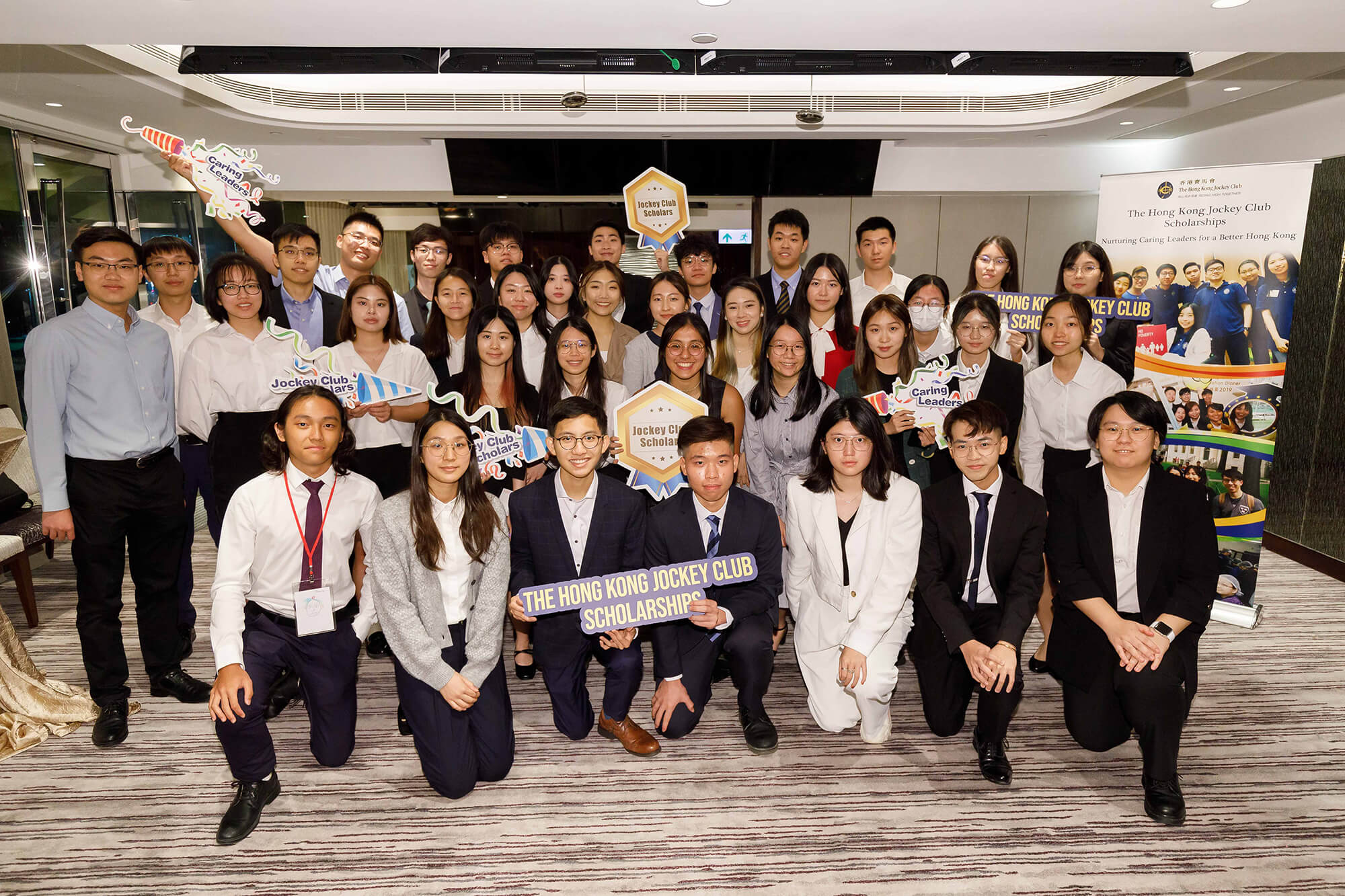
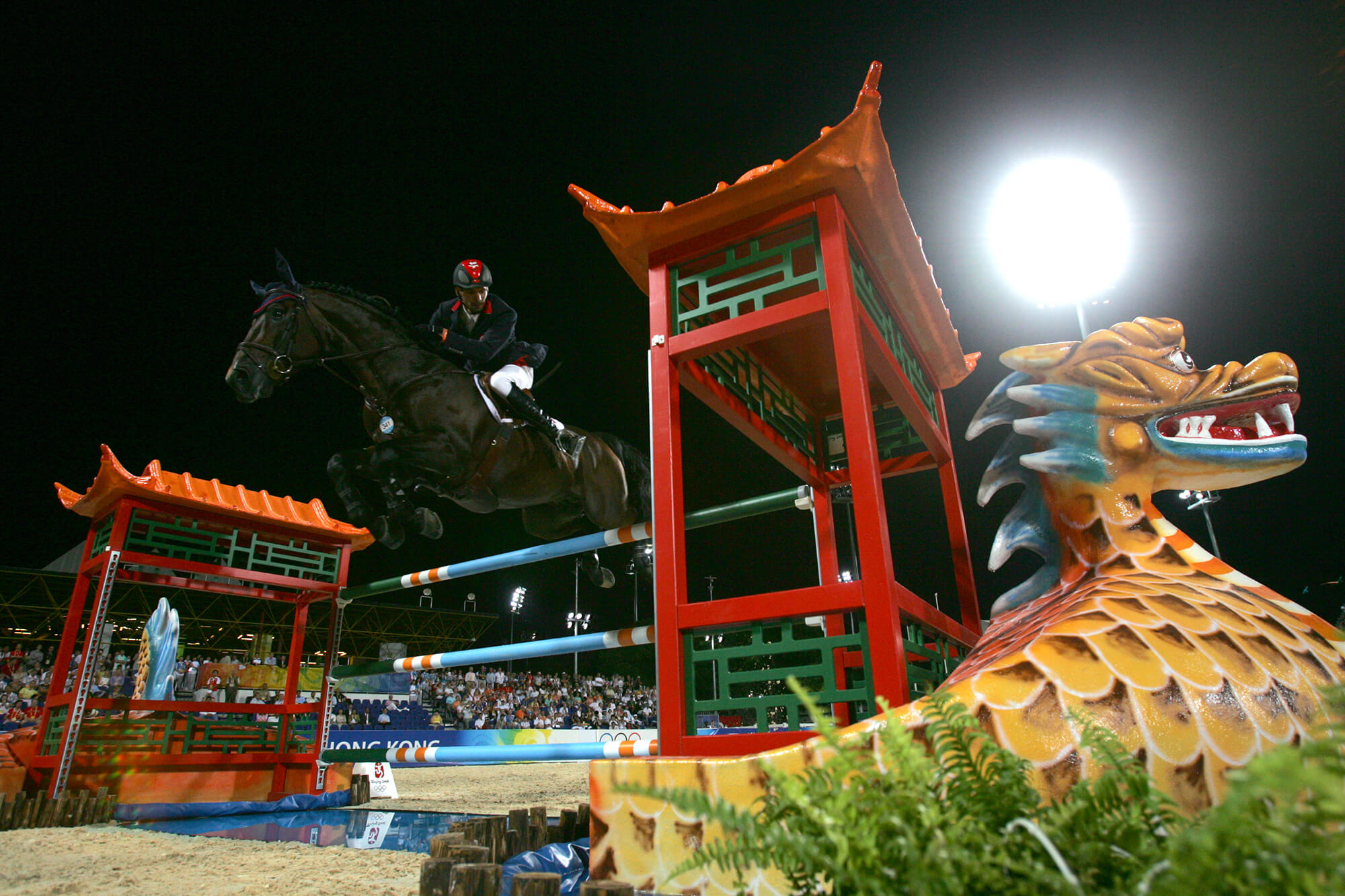
2008 - 2024
The year 2008 was one to remember for most Hongkongers. It was the first time in history that the Summer Olympics had been held so close to home. Thanks to its long history of horse racing and equestrian sports, Hong Kong was selected to host the equestrian events of the Beijing 2008 Summer Olympic Games. The Club took on the essential responsibility of managing equine care and logistics for the events, and was recognised as "Outstanding Contributor, Beijing 2008 Olympic Games Equestrian Events".
The year 2008 was one to remember for most Hongkongers. It
was the first time in history that the Summer Olympics had
been held so close to home. Thanks to its long history of
horse racing and equestrian sports, Hong Kong was selected
to host the equestrian events of the Beijing 2008 Summer
Olympic Games. Some US$150 million was invested to build the
Olympic competition venues in Sha Tin, and the Club took on
the essential responsibility of managing equine care and
logistics. These efforts earned the Club official
recognition as "Outstanding Contributor, Beijing 2008
Olympic Games Equestrian Events".
That ground-breaking year saw China host its first Olympics
and Chinese athletes score 100 medals, including 48 golds.
This inspired many young athletes in the city, who would go
on to shine on the global stage themselves.
Later in 2008, the Club established the HKJC Equestrian Team
and the Junior Equestrian Training Squad (renamed as the
Youth Development Programme in 2019) to develop the
potential of Hong Kong's riders. Members of the HKJC
Equestrian Team have been winning medals at back-to-back
Asian Games since 2010, riding as representatives of the
Hong Kong, China team.
In 2018, HKJC Equestrian Team rider Jacqueline Siu won Hong
Kong's first-ever Asian Games equestrian gold medal in
Jakarta, illustrating the maturation of the sport in Hong
Kong. More recently in 2022 at the 19th Asian Games in
Hangzhou, Siu again stood on the podium with an individual
silver medal, while the dressage team (Annie Ho, Jacqueline
Siu and Samantha Chan) won its first ever team dressage
medal with a bronze. 2022 also marked the year that the
Youth Development Programme expanded to include a
Club-sponsored youth squad of Hong Kong riders based in the
Mainland.
Hong Kong athletes have continued to shine, with the Tokyo
2020 Summer Olympic Games marking another glorious new
chapter in the city's sporting history. At those Olympics,
fencer Cheung Ka-long won Hong Kong's second-ever Olympic
gold medal, while swimmer Siobhan Haughey clinched two
silver medals. Four years later, at the Paris 2024 Summer
Olympic games, Cheung went on to take another gold in
fencing along with Vivian Kong's first gold in the sport,
while Haughey won two bronze medals. One of the incentives
for Hong Kong's Olympic athletes is the aptly named Jockey
Club Athlete Incentive Awards Scheme. The scheme provides
athletes who win medals at major events with a cash award.
2004
The people of Hong Kong have consistently shown their willingness to support one another, and this is especially true in times of need and crisis. In the wake of the 2003 SARS outbreak in Hong Kong, the Club donated HK$500 million to set up the Centre for Health Protection to help the government find longer-term solutions to disease control.
Hongkongers have consistently shown their willingness to
support one another, and this is especially true in trying
times, when the need for community and hope is stronger than
ever. Over the years, the Hong Kong public, private sector
and local government have found a way to navigate
difficulties to protect the city they love.
In the wake of the 2003 SARS outbreak in Hong Kong, the Club
donated HK$500 million to set up the Centre for Health
Protection to help the government find longer-term solutions
to disease control.
To achieve its mission, the centre collaborates with major
local and international stakeholders at every stage, sharing
information and making recommendations efficiently and
transparently.
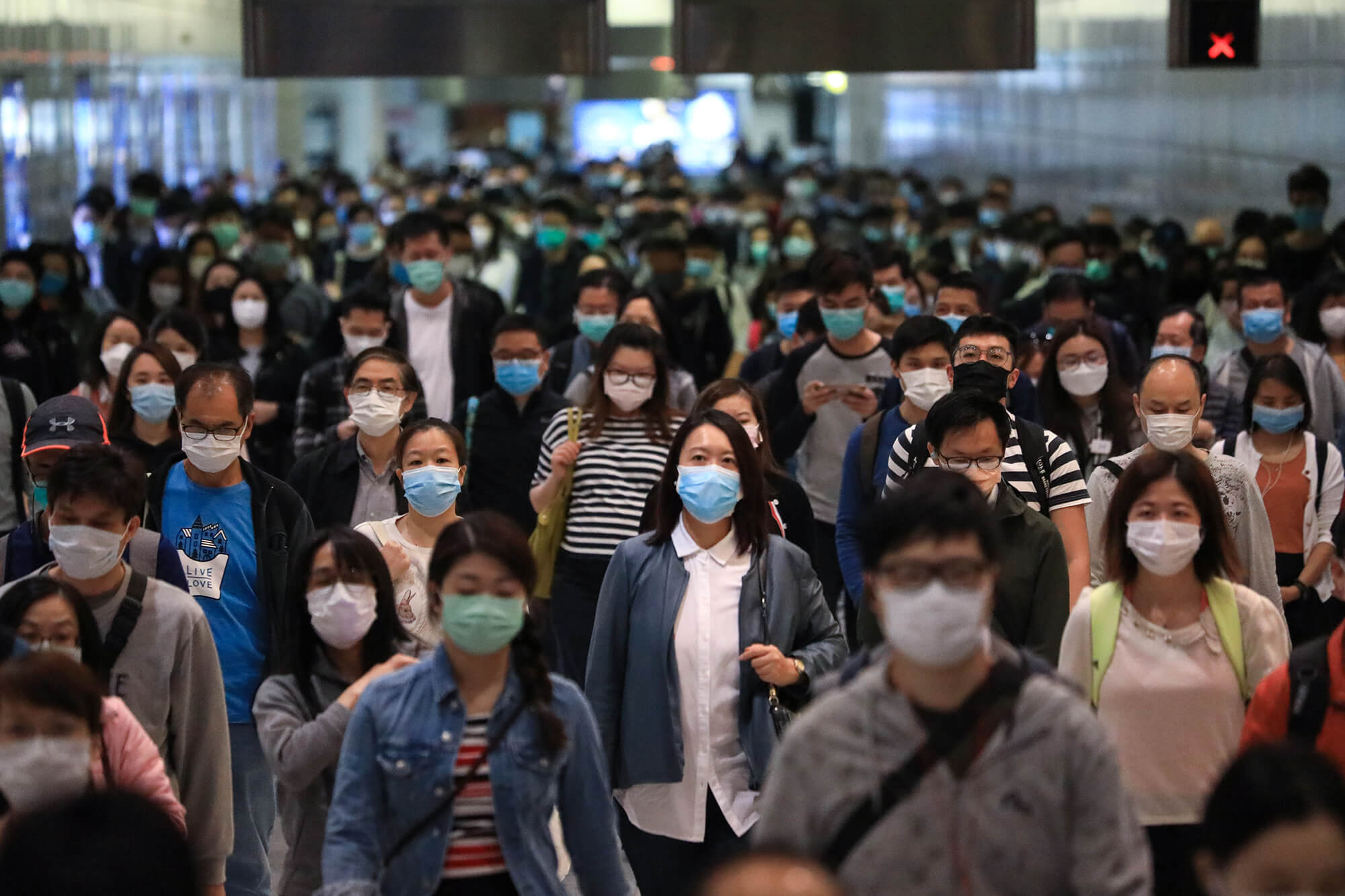
2020
When the COVID-19 pandemic struck in 2020, the city's population, fully supported by the Club, was quick to adopt preventive measures such as mask-wearing and social distancing to limit the spread of the virus. The Club approved over HK$2.9 billion for initiatives that addressed the wide-ranging impact of the pandemic.
Lessons learned by Hongkongers in the early 2000s were not
forgotten. When the COVID-19 pandemic struck in 2020, the
city's population, fully supported by the Club, was quick to
adopt preventive measures such as mask-wearing and social
distancing to limit the spread of the virus.
The government also swiftly reacted with a multipronged
approach to containing the virus, calling for prompt
responses, staying alert and working transparently. In
addition, it mobilised tens of billions of Hong Kong dollars
through its Anti-epidemic Fund to keep the public and
businesses supported through the COVID-19 battle.
For its part, the Club approved over HK$2.9 billion for
initiatives that addressed the wide-ranging impact of the
pandemic, providing a lifeline to those in urgent need
across the city during that period.
But it is not only during public health crises that the
government invests in the city's medical sector. Hundreds of
millions of Hong Kong dollars are being earmarked in annual
government budgets to boost the development of life and
health technologies, including cell and gene therapy,
bioinformatics, and biomedical engineering.
2021-2023
Hong Kong has long held a tradition of philanthropy, with the city being home to some 10,000 charities. After the 2008 Sichuan earthquake, Hongkongers contributed more than HK$1 billion to help those in need, and the Club pledged a matching amount to aid in reconstruction and recovery efforts. During the devastating 2021 floods in Henan province, the Club contributed a donation of HK$20 million to support rescue and relief operations.
To support further development of the healthcare sector, the
Club provides funding for medical research and healthcare
facilities in the city, including the CUHK Medical Centre,
which opened in 2021 as a non-profit, private teaching
hospital. All surpluses from the hospital are directed back
into the hospital for its development and the CUHK Faculty
of Medicine for research and teaching.
In 2023, the Club signed a memorandum of understanding with
the University of Hong Kong, the University of Cambridge and
the International Vaccine Institute to establish the global
headquarters of the new Hong Kong Jockey Club Global Health
Institute, which aims at bringing the latest translational
vaccine technology to the city through collaborations
between local and global academics and institutions.
Hong Kong society has long held a tradition of philanthropy,
with the city being home to some 10,000 charities. This
spirit of giving is particularly in evidence during urgent
times of need, such as after the 2008 Sichuan earthquake,
when Hongkongers contributed more than HK$1 billion to help
those in need. The Club pledged a matching amount to aid in
reconstruction and recovery efforts.
And in the face of the devastating 2021 floods in Henan
province, the Club once again stepped up with a donation of
HK$20 million to support rescue and relief operations.
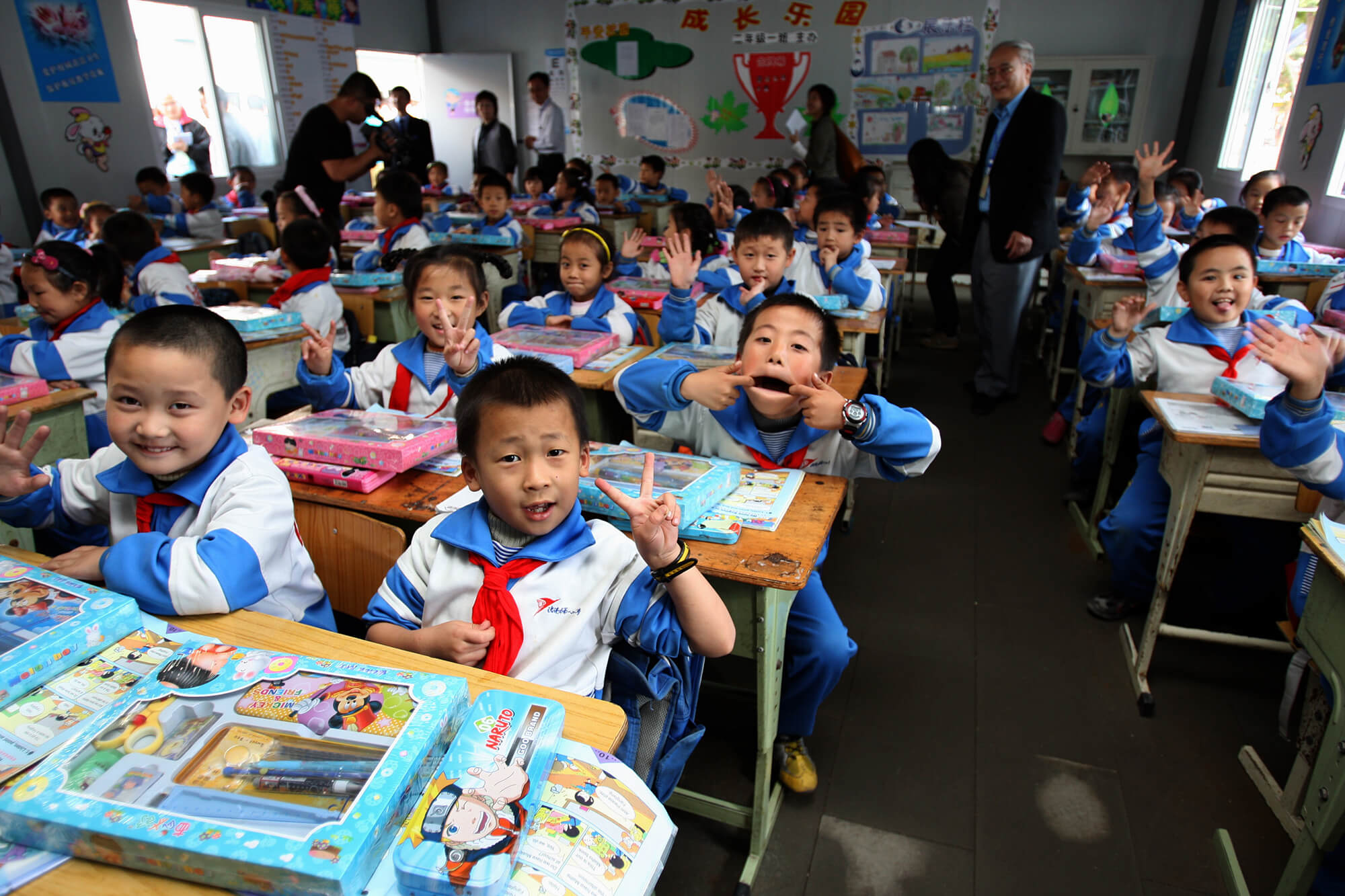
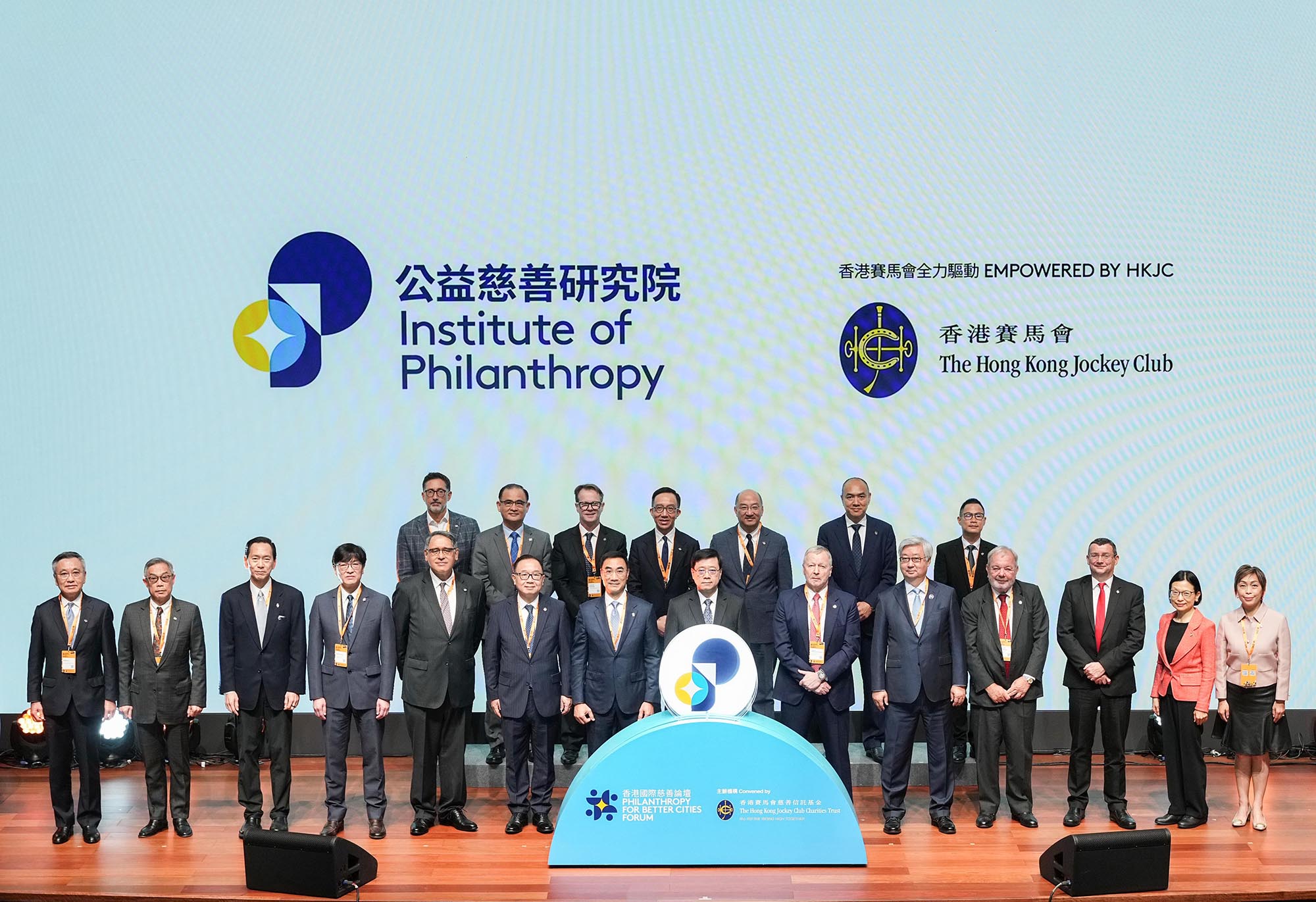
2023
Established as an independent "think-fund-do" tank by its Charities Trust in September 2023, the Institute of Philanthropy (IoP) is dedicated to advancing philanthropy in China and Asia.
Established as an independent "think-fund-do" tank by the Club and its Charities Trust
in September 2023, the Institute of
Philanthropy (IoP) is dedicated to advancing philanthropy in
China and Asia.
IoP is dedicated to promoting philanthropic thought
leadership and enhancing sector capabilities at local,
regional and global levels in collaboration with fellow
funders. It seeks to provide an Asia-based platform bringing
global stakeholders together to promote the betterment of
societies everywhere.
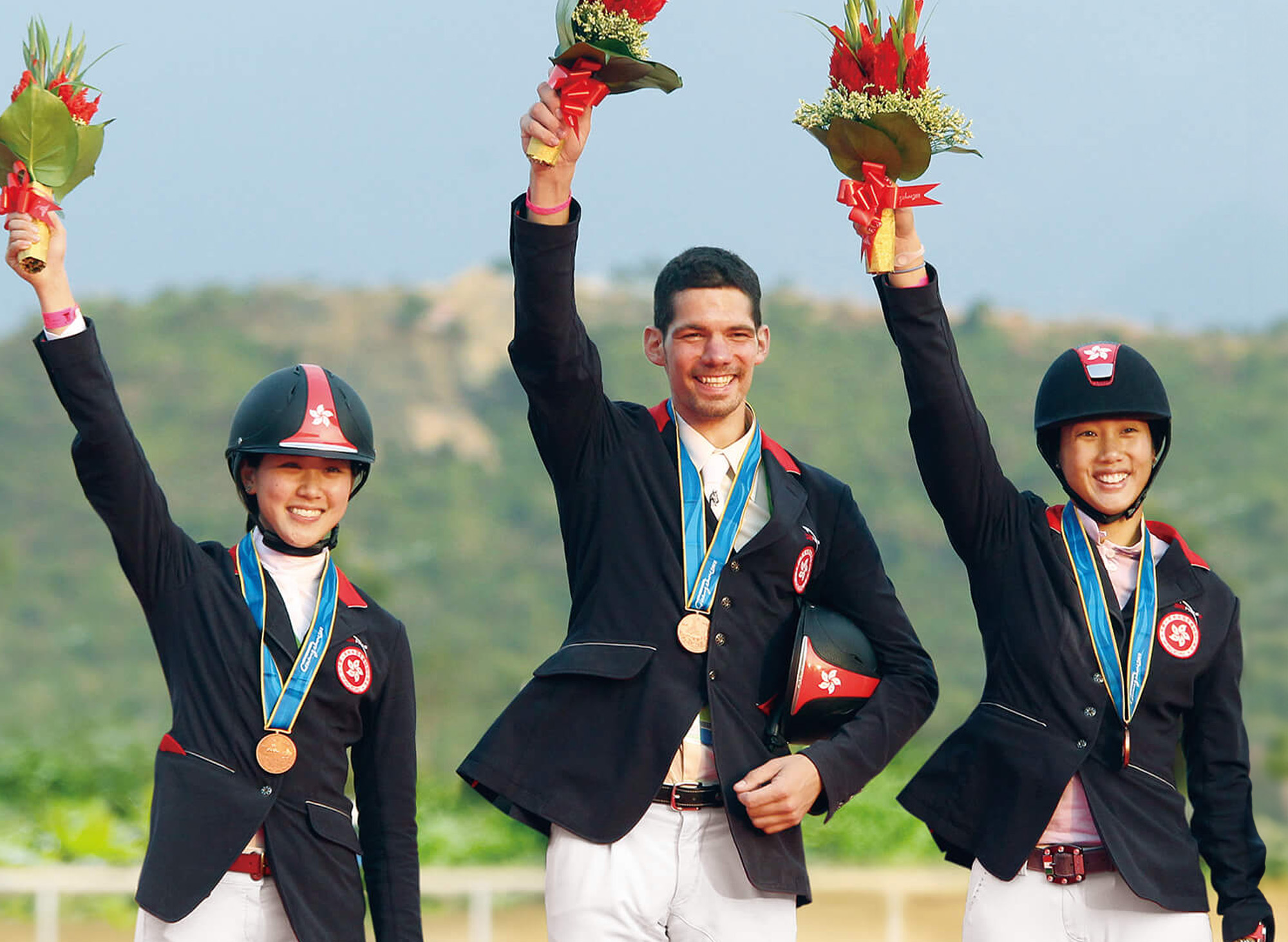
2010 - 2019
In the Mainland, the Club has been supporting equine sports since the 1980s, including the donation of horses to equestrian teams, the provision of veterinary and stable management training, as well as collaboration on equestrian talent training. In 2010, the Club earned the title of "Outstanding Contributor, Guangzhou 2010 Asian Games Equestrian Events" for its operational support. The Club has also funded an upgrade of the Guangdong Huangcun Sports Training Centre.
On July 1, 2017, the Framework Agreement on Deepening
Cooperation for the Guangdong-Hong Kong-Macao Greater Bay
Area was set. This ambitious development scheme links Hong
Kong, Macao and nine cities in Guangdong Province together
to enhance connectivity and integration, which as of 2023
had a combined population of over 86 million and a GDP of
more than 14 trillion yuan (about HK$15.6 trillion). It is
set to become one of the world's fastest-growing hubs for
finance and commerce, as well as research and
development.
When it came time to help this region develop its equine
industry, Hong Kong stepped up to the task. In the Mainland,
the Club has been supporting the development of equine
sports since the 1980s, including the donation of horses to
equestrian teams, the provision of veterinary and stable
management training, as well as collaboration on equestrian
talent training.
The Club provided its support at the Guangzhou 2010 Asian
Games and continued its efforts at the Hangzhou Asian Games
in 2023, where it went above and beyond in six key areas for
the organisation of equestrian events. These areas included
biosecurity, horse transportation, stable management,
veterinary and farriery services, venue operations, and
international stakeholder engagement. The Club's
professionalism at both Guangzhou and Hangzhou was
recognised in the titles bestowed to it by the events'
organisers: "Outstanding Contributor, Guangzhou 2010 Asian
Games Equestrian Events" and "Outstanding Contributor to the
Hangzhou Asian Games" respectively.
The Club has a long-standing relationship with the Chinese
Equestrian Association (CEA) and the China Horse Industry
Association (CHIA). By signing two agreements with CEA and
CHIA respectively in 2023, the Club has expanded its
cooperation with these two counterparts, which contributed
to the development of the speed racing and equestrian
industries. It has also funded an upgrade of the Guangdong
Huangcun Sports Training Centre, which included the
construction of an equestrian competition arena of
international standards.
2018 - 2026
In 2018, the 150-hectare Hong Kong Jockey Club Conghua Racecourse opened in Guangzhou, marking the official launch of joint operations between stables and training facilities on both sides of the border.
The wait was over. In 2018, the 150-hectare Hong Kong Jockey
Club Conghua Racecourse opened in Guangzhou, marking the
official launch of joint operations between stables and
training facilities on both sides of the border. Racing fans
in the Mainland finally experienced the sport and spectacle
of international standard racing in 2019, when the Club
staged an exhibition race day in Conghua, highlighting the
Greater Bay Area as a location of growing importance in the
global equine industry.
The public will be able to attend regular race meetings at
Conghua starting from 2026, after the building of the
Grandstand as well as stabling and training facilities. As
the Greater Bay Area continues to develop, the equine
industry, like many burgeoning sectors in the region, will
also enjoy tremendous opportunities for future growth.
